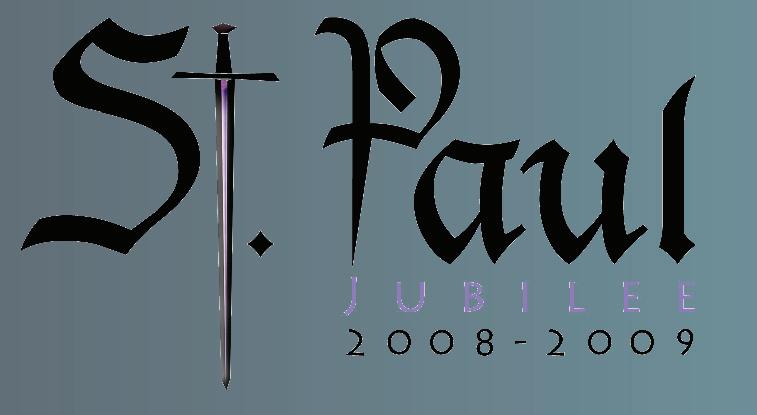
“...when a man turns to the Lord the veil is removed. Now the Lord is the Spirit, and where the Spirit of the Lord is, there is freedom. And we all, with unveiled face, beholding the glory of the Lord, are being changed into his likeness from one degree of glory to another; for this comes from the Lord who is the Spirit. Second Letter to the Corinthians, 3:16-18
THE R ECORD

the Parish. the Nation. the World.
“Be indefatigable in your purpose and with undaunted spirit resist iniquity and try to conquer evil with good, having before your eyes the reward of those who combat for Christ.”
-Bishop Matthew Gibney
1874
2008 saw moments of great beauty like World Youth Day put the Gospel and the Church squarely before the gaze of the world - even in countries like Iraq. What effect will WYD have in a country like Australia? This week’s edition of The Record looks back on a momentous year of change for the Church around the world.
A year of grace and blessings
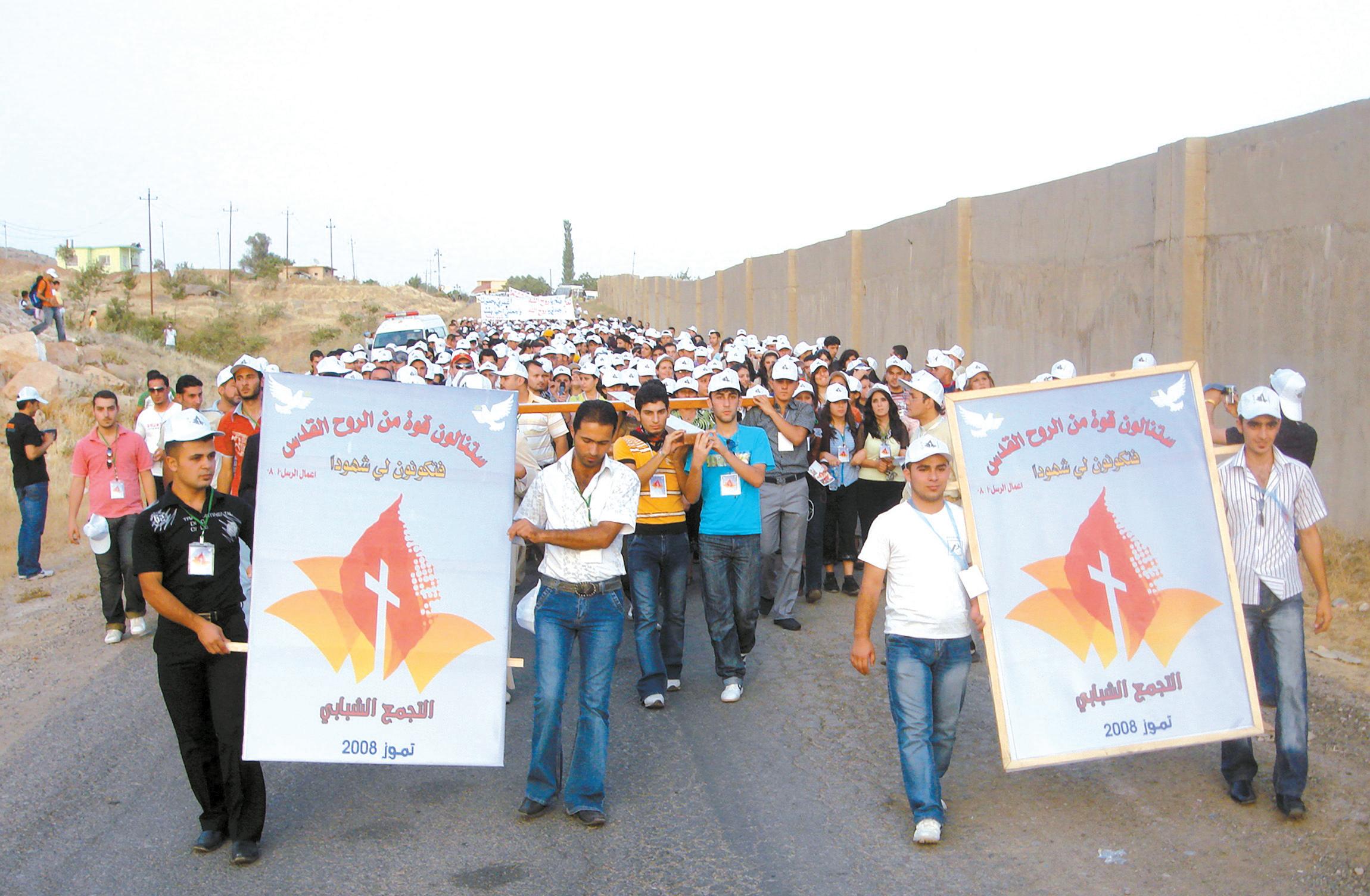
TASMANIAN DEFENCE
Hobart Archbishop Adrian Doyle says the secular media has created an unnecessarily hostile environment between the Pope and the gay community.

PRODIGY TO CARMELITE
How a young musical genius became a staunch defender of the faith, and influenced one of the greatest saints of the Church. The Carmelites want him canonised. Pages 13-15
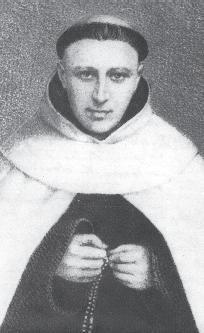
MARRIED DUO BEATIFIED
The parents of St Therese of Lisieux are beatified, proving once more, as Popes John Paul II and Benedict XVI have always said, that holiness is not just for clerics and Religious. Page 12
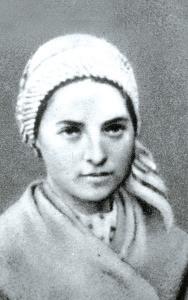
Page 9 Western Australia’s award-winning Catholic newspaper since 1874 - Wednesday January 7 2009 Perth, Western Australia $2 www.therecord.com.au
Even here... faith in Him survives - and is proud. Iraqi Catholic youth carry World Youth Day posters and a cross during a procession in Aradel, northern Iraq, on July 17 in the midst of WYD happening in another hemisphere. More than 6500 youth in Iraq participated in processions, catechesis, the Way of the Cross, singing and Masses to mark the simultaneous international gathering occurring in Sydney. Some Iraqi Catholics who had made plans to travel to Sydney were not granted visas.
PHOTO: CNS/RAMY MAALOUF
9
c. 518-603
feast – January 13
Pope’s busy year highlights three themes: St Paul, Bible, US trip.
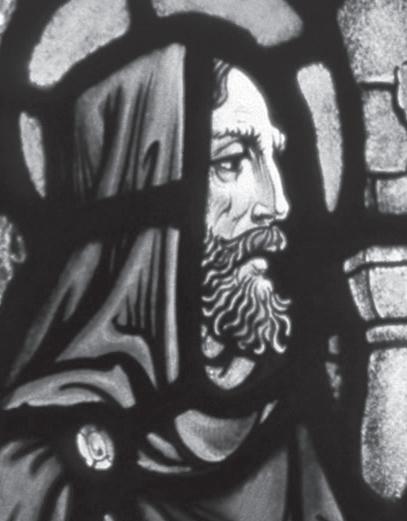

This bishop, possibly a native of Lothian, in Scotland, reportedly founded the church at Glasgow. In one of many legends about this Celtic saint, his mother survived being pushed off a cliff above the Firth of Forth. Also known by the nickname Mungo, meaning “dear boy,” Kentigern was said to have been exiled briefly to Cumbria or Wales, where he founded a monastery before being recalled to the north. The ring and fish on Glasgow’s heraldic arms refer to the Kentigern legend in which he miraculously saved an unfaithful wife from the anger of her royal husband.
for
21 Annual Mass for Italian Choir, St Brigid’s - Archbishop Hickey
30 Chain of Mary Fundraising LunchArchbishop Hickey Kentigern
Jesus Summer School, New Norcia - Archbishop Hickey
23 Annual Flame Congress Opening Rally, John XXIII College - Archbishop Hickey
in the news
Survey finds most people support some restrictions on abortion
WASHINGTON (CNS) - A new online survey conducted for the U.S. Conference of Catholic Bishops finds a majority of participants support at least some restrictions on abortion. The survey conducted online Dec. 10-12 asked 2,341 people about the circumstances under which they would favor or oppose legal abortion and about what kind of regulations of abortion they would support or oppose. Among its findings were that 78 percent favor requiring abortions be performed only by licensed physicians and that 72 percent favor requiring women seeking abortions be told of the potential physical and psychological risks and about alternatives such as adoption. It found 11 percent think abortion should be illegal in all circumstances and 38 percent said it should be legal only under limited circumstances, such as in cases of rape or incest or to save the life of the mother. Forty-two percent said abortion should be legal for any reason. The USCCB news release noted that Harris Interactive, which fielded the study for the USCCB, said the data was weighted using a propensity scoring system to be representative of the total U.S. population on the basis of region, age within gender, education, household income, race/ethnicity and propensity to be on the Internet. Harris said no estimates of sampling error could be calculated, according to the USCCB release.
Across the globe, focus is always the same: the Lord
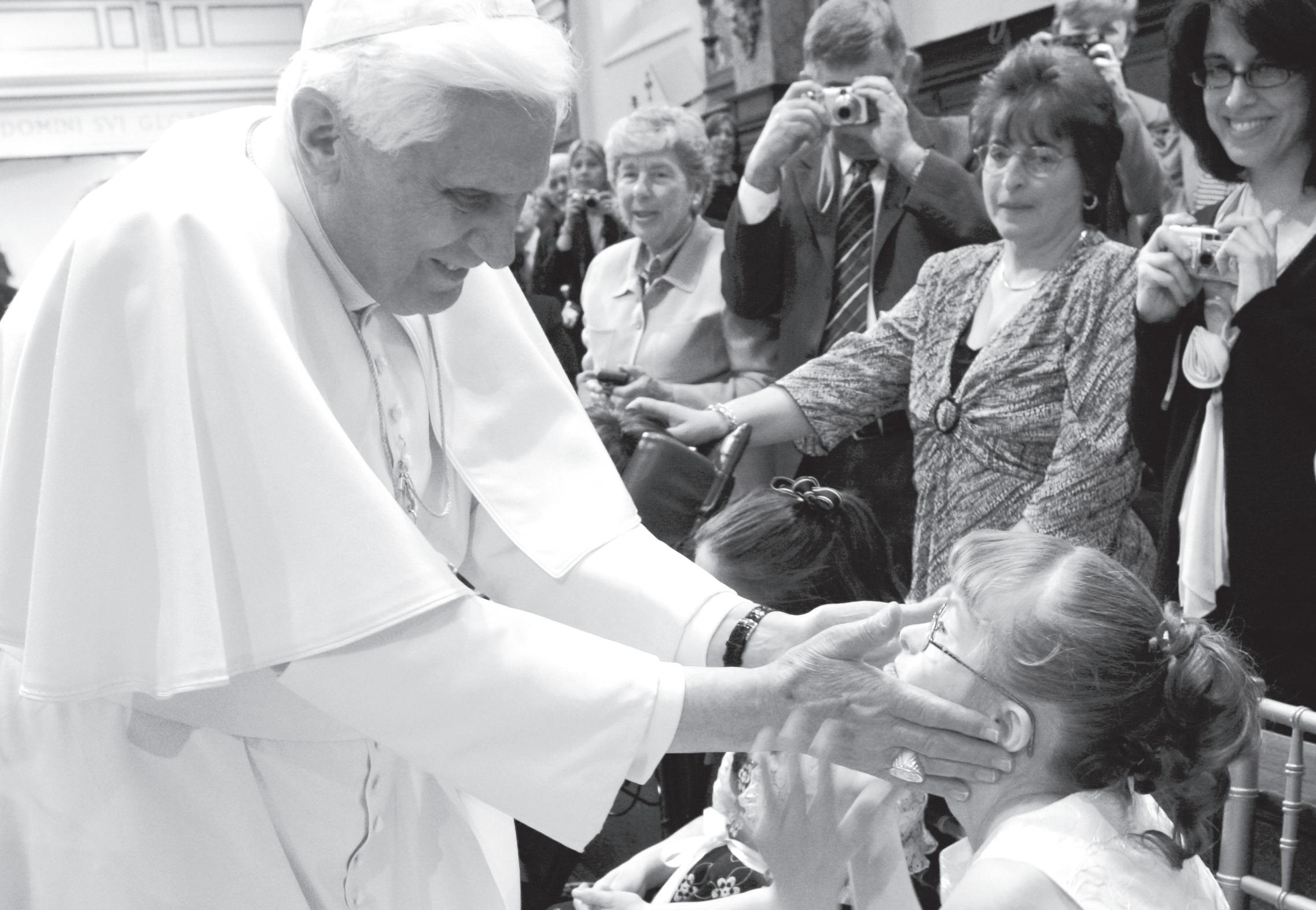 ■ By John Thavis
■ By John Thavis
VATICAN CITY (CNS) - For Pope Benedict XVI, 2008 was the year of St Paul, the year of the Bible and the year of the United States.
Amid the hundreds of papal meetings and events, those three themes stood out in special focus as 2008 drew to a close.
In June, the Pope opened a jubilee year to celebrate the 2,000th anniversary of the birth of St Paul. Accompanied by Ecumenical Patriarch Bartholomew of Constantinople and other representatives of Orthodox and Anglican Churches, he said the apostle was a model of missionary courage for people struggling against religious indifference in modern society.
In October, the Pope presided over a three-week Synod of Bishops on the Word of God that explored ways to bring Catholics closer to the Bible and promote better use of Scripture in liturgy and catechesis. Closing the assembly, the Pope emphasised that the Church’s missionary activity will fall flat unless it is nourished by scriptural reading and understanding.
The Pope will now write a follow-up document based on the synod’s 55 final propositions, which included a proposal to admit women to the official ministry of lector, or Scripture reader, at Mass.
tims of the September 11 attacks. During his US visit, the Pope took aim at what he called the “attack of a new secularism” that threatens to undermine traditional moral values and the voice of religion in public affairs. American society is at a moral crossroads, he told his listeners, as it faces problems such as social alienation and anger, increased violence and “forgetfulness of God.”
“The Pope’s clear and repeated condemnation of sex abuse in the US was echoed during his July trip to Australia...”
lating him and offering prayers for him and the entire country.
Pope Benedict’s third foreign trip of 2008 was to France, where he celebrated Mass for an overflow crowd in Paris and visited the Marian shrine of Lourdes, where he commemorated the 150th anniversary of Mary’s apparitions at the site. China was clearly on the Pope’s mind in 2008. In May, he welcomed China’s Philharmonic Orchestra to the Vatican, saying he wanted to extend a hand of friendship to the country. Later that month, he let the Chinese people know he was praying for them following a deadly earthquake.
The Pope also established May 24 as the world day of prayer for the Church in China. The text this year expressed the hope that Catholics in China would never live in fear of spreading the Gospel.
The Church in Iraq suffered increasing anti-Christian violence and intimidation, and the Pope deplored the death of Chaldean Catholic Archbishop Paulos Faraj Rahho of Mosul, who was found dead in March, two weeks after being kidnapped.
In India, a deadly wave of anti-Christian violence in Orissa state prompted a papal appeal for greater government protection.


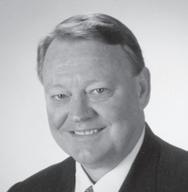
In April, Pope Benedict made his first papal visit to the US, spending six days in Washington and New York and addressing the UN General Assembly. Among the highlights were a private meeting with victims of clergy sex abuse, Masses at baseball stadiums in both cities and a solemn visit to ground zero to pray for vic-
Peter Rosengren cathrec@iinet.net.au
JOURNALISTS
Anthony Barich abarich@therecord.com.au
Mark Reidy reidyrec@iinet.net.au
Robert Hiini production@therecord.com.au
The Pope’s clear and repeated condemnation of sex abuse in the US was echoed during his July trip to Australia, where he joined more than 200,000 young Catholics from 170 countries for World Youth Day celebrations. Before leaving the country, he celebrated a private Mass with Australian victims of clergy sex abuse. His visit to Australia was the longest foreign trip in duration and distance. Addressing cheering throngs of young people, he urged them to give themselves to Jesus and told them: “In so many of our societies, side by side with material prosperity, a spiritual desert is spreading: an interior emptiness, an unnamed fear, a quiet sense of despair.”
Although the Pope and the Vatican steered clear of involvement in the US presidential election campaign, as soon as it was over the Pope sent a message to President-elect Barack Obama, congratu-
In interreligious affairs, the Pope helped arrange a new chapter in Catholic-Muslim dialogue when the Catholic-Muslim Forum met at the Vatican in November. Addressing participants, he said members of both faiths have a common obligation to defend human rights and help the world’s suffering.
In a meeting in October with the
Page 2 January 7 2009, The Record
EDITOR
ADMINISTRATION Bibiana
administration@therecord.com.au ACCOUNTS
PRODUCTION & ADVERTISING Justine Stevens
CONTRIBUTORS Debbie Warrier Karen & Derek Boylen Anna Krohn Catherine Parish Fr Flader John Heard Christopher West The Record PO Box 75, Leederville, WA 6902 - 587 Newcastle St, West Perth - Tel: (08) 9227 7080, - Fax: (08) 9227 7087 The Record is a weekly publication distributed throughout the parishes of the dioceses of Western Australia and by subscription. 200 St. George’s Terrace, Perth WA 6000 Tel: 9322 2914 Fax: 9322 2915 Michael Deering 9322 2914 A division of Interworld Travel Pty Ltd ABN 21 061 625 027 Lic. No 9TA 796 michael@flightworld.com.au www.flightworld.com.au • CRUISING • FLIGHTS • TOURS • Travel Dream LIVE YOUR FW OO3 12/07
JANUARY
Kwaramba
Cathy Baguley recaccounts@iinet.net.au
production@therecord.com.au
2008 SAINT OF THE WEEK OFFICIAL ENGAGEMENTS
Sproxton
Disciples of
Ordination to Priesthood, JoondannaBishop
16-17
© 2005 Saints
Today © 2009 CNS Crosiers
God is love... Pope Benedict blesses a child during a meeting with young people with disabilities at St Joseph Seminary in Yonkers, New York, on April 19.
PHOTO: CNS/NANCY WIECHEC


International Jewish Committee on Interreligious Consultations, the Pope said Catholic-Jewish dialogue was a “sacred duty.” The meeting was shadowed in part by continuing controversy over the sainthood cause of Pope Pius XII. At a Mass on October 9 to commemorate the 50th anniversary of Pope Pius’ death, the Pope defended the late Pope’s efforts to help Jews during World War II; at the same time, he has put Pope Pius’s cause on hold while the Church reflects more deeply on the issue, Vatican officials announced.
In liturgical matters, Pope Benedict introduced some changes to papal Masses; for one thing, those receiving Communion from the Pope now receive the host on the tongue while kneeling. He also approved optional wordings for the dismissal at Mass and was considering a proposal to move the sign of peace to a different part of the liturgy.
The Pope issued no encyclicals or other major teaching documents in 2008, yet in talks to parishes, politicians and Church organisations he focused increasingly on two themes: economic justice and the environment.
When international leaders met twice for financial consultations during the year, he urged them to tackle global poverty with courage
and to honour the commitments made in 2000 toward structural relief to poorer countries.
To the Church’s own faithful, he hammered home what has become a favourite theme: that the practice of real-world charity is a litmus test of Christian faith, and that those facing God’s final judgment will have to respond to questions like, “Did you feed me when I was hungry?”
As the global economic crisis worsened during the year’s second half, the Pope reminded financial institutions of their duty to put people before profits. He also reminded people that modern ideals of money and material success are passing realities, saying: “Whoever builds his life on these things - on material things, on success, on appearances - is building on sand.”
In Australia, in the northern Italian mountains and at the Vatican, the Pope also spoke frequently about the need to safeguard creation.
To World Youth Day participants, he emphasised that the morality of environmental protection flows from God’s plan for creation as a whole.
In October, at the increasingly “green” Vatican City, he saw the installation of a new solar-panel roof at the Vatican’s audience hall.

19TH ANNUAL FLAME CONGRESS JANUARY 23 TO 25 2009 John XXIII College, John XXLLL Avenue, Mt. Claremont.











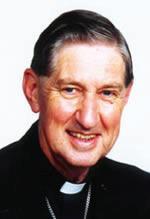


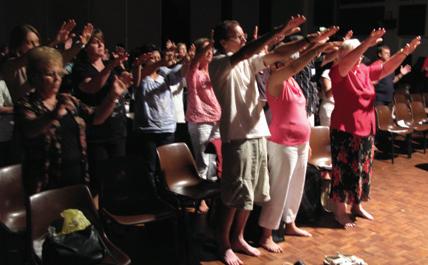










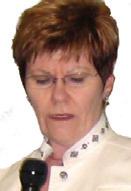
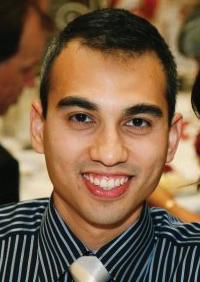
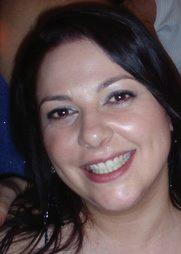






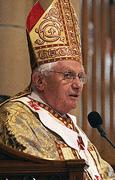



THE PREACHERS OF THE WORD: Archbishop Hickey. Eddie Russell. Kaye Rollings. Carlos Moreira. Livia Lucchese. Cyrus D’Souza. Kay Ford.

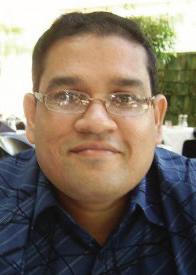

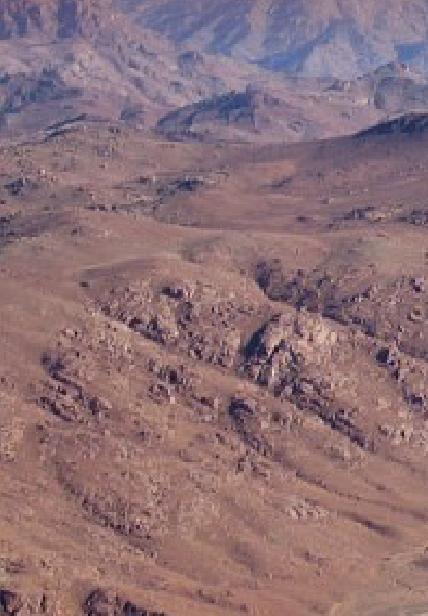










January 7 2009, The Record Page 3 2008 Flame Ministries International P: (08) 9382 3668 E: fmi@flameministries.org W: www.flameministries.org
THE AND
LOGOS OGO
THE PROPHETS OF A NEW AGE
RHEMA
the
let us receive this invitation; let us approach the table of the word of God, so as to be nourished and live, not on bread alone, but on every word that comes from the mouth of God.” (Pope
Evening Sessions: 7.30 pm Friday Jan 23. Saturday Jan 24. Sunday Jan 25 2009. Daytime Saturday Jan 24. 9 am - 11.30 am - 2.15 pm - 4.30 pm. Daytime Sunday Jan 25 9.30 am MASS - 11.30 am - 2.15 am - 4.30 pm.
“Brothers and sisters of
whole world,
Benedict XVI)
Following Him: Pope Benedict XVI celebrates midnight Mass, above, in St Peter’s Basilica at the Vatican on December 25 before a congregation including ambassadors and diplomats accredited to the Vatican. Meanwhile, Cardinals and bishops enter the Clementine Hall past Swiss Guards for a gathering to exchange Christmas wishes with Pope Benedict XVI at the Vatican on December 22. The misreporting of the Pope’s comments during the meeting caused a furore around the world when he called for an ecology of the human person to complement ecological concerns for the environment.
PHOTOS: CNS /MAX ROSSI, REUTERS
From Iraq to Congo to Sri Lanka, in 2008 Church officials played the role of Good Samaritan... Church helps victims of crises, violence
■
By Regina Linskey
WASHINGTON (CNS)Catholic Church officials continued to advocate for and work to help victims of violence and the global food and economic crises in 2008.
In addition to helping refugees from conflicts with global repercussions in the Middle East or Africa, the Church has advocated for justice and peace for the poor, hungry and defenceless in Asia and Latin America.
In some of the world’s hot spots, such as India, the violence was sectarian in nature. Nearly 60 people died, hundreds were injured and thousands were displaced in antiChristian violence in India’s Orissa state. In late August, a Hindu leader and four of his associates were killed and, although a Maoist group took credit for the murders, Hindu fanatics blamed Christians.
Iraq continued to see Christians fleeing the country five years after the US invasion. In northern Iraq, Catholic leaders said Christians were targeted for kidnappings and murder, and Chaldean Archbishop Paul Faraj Rahho of Mosul was among the victims.
Church aid workers provided basic necessities, counselling and legal assistance to many of the 2.3 million Iraqi refugees in Lebanon, Egypt and Syria. For Catholic agencies in host countries, that meant greatly expanding services.
In Lebanon, most of the Iraqisincluding nearly 10,000 Chaldean Catholics - were unable to receive work permits or access to health services and schools, and some ended up in prison. In February and March, the Caritas Lebanon Migrant Centre successfully negotiated with Lebanese authorities for the release of hundreds of Iraqi refugees detained because of their illegal status.
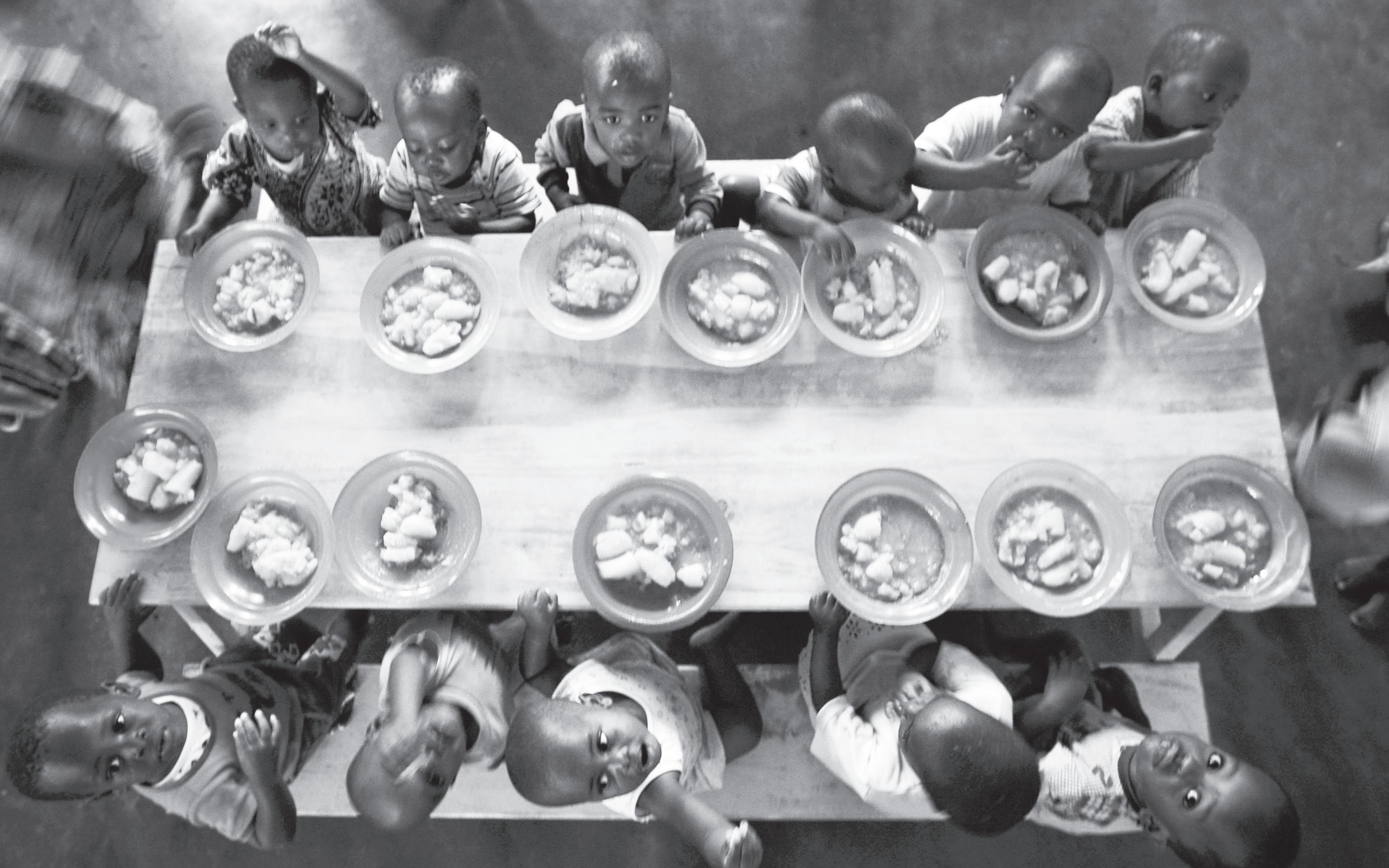
The victims: Children
November
At the Vatican, Pope Benedict XVI denounced violence in world trouble spots. He also spoke against the continuing shortages of food and various economic crises. Just before leaders of the world’s most industrialised nations met in July, the Pope said that “speculation and financial turbulence and their perverse effects on food and energy prices” have increased the vulnerability of the world’s poor and
or
disadvantaged. One of the most dramatic examples was found in Zimbabwe.
Although opposition candidate Morgan Tsvangirai won March elections, the government said he did not have enough votes for an outright win. In the months that followed, human rights groups said opposition supporters were the targets of brutal state-sponsored violence that left more than 80 dead
HARVEST PILGRIMAGES 2009

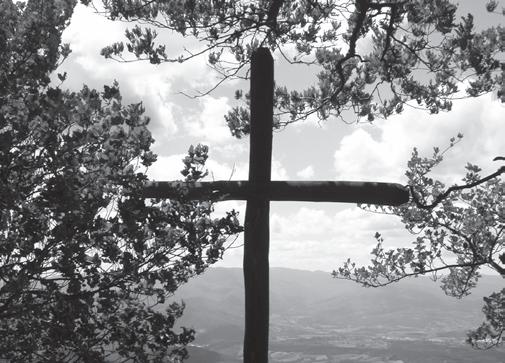
GRACES OF ITALY
With Fr Don Kettle
Departing 15th May 2009
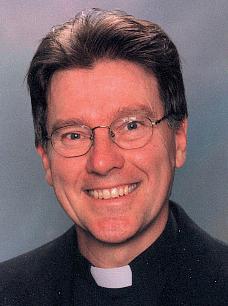
Not only is Italy a land of unforgettable charm and beauty, it is also a land made rich in grace by its colorful history of holy men and women.
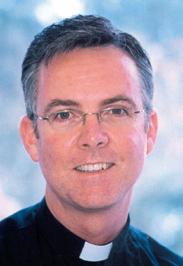
A 14 day Pilgrimage Padua (2) Venice Ravenna Florence (2) Siena Assisi (2) Loreto (1) Lanciano San Giovanni Rotondo (2) Monte Sant’ Angelo Pietrelcina / Rome Option (3)
Also Departing: 29 Jun • 3 & 29 Sep • 19 Oct 2009
• Why not combine Graces of France & Graces of Italy in June & September

of some of the Church’s great Saints on this blessed pilgrimage route through the glorious countryside and alpine regions of France.
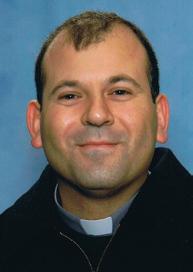
A 13 day Pilgrimage Paris (2) Rouen Lisieux (2) Charters Nevers Paray Le Monial (2) Taize Ars La Salette (1) Turin (2) Finish Turin or Venice / Lourdes Option (3)
Also Departing: 20 Sep • 20 Oct 2009
• Optional 9 night Italy Extension
and 200,000 displaced. Although Tsvangirai and Zimbabwean President Robert Mugabe signed a power-sharing agreement in September, a month later the head of the country’s Catholic justice and peace commission said political leaders were playing politics at the expense of the poor, who were trying to survive on fruit.
Aid agencies said more than 5 million Zimbabweans faced starvation, and the continued disruption in government services, including water and electricity, led to an outbreak of cholera. Zimbabweans, unable to get treatment, fled to South Africa, Mozambique, Zambia and Botswana, spreading the disease. By mid-December, 800 people had died of cholera in Zimbabwe alone.
Meanwhile, Church officials in Congo - where more than 250,000 people were displaced by fighting between August and Decemberappealed to Canada, the United States, France and Belgium for help implementing a foundering ceasefire agreement signed in January.
Church leaders elsewhere in the world called for peace in their regions.
In his final Easter message before retirement, former Latin Patriarch Michel Sabbah of Jerusalem said the Holy Land needs leaders who are ready to “offer their lives” for peace rather than those who “issue orders to kill.”

Starving: A severely malnourished infant hangs limp from her mother’s back at a Catholic mission feeding centre in rebel-held Rutshuru, eastern Congo, in early November. PHOTO: CNS/FINBARR O’REILLY, REUTERS
attacked the region to wipe out the Tamil rebels, several priests, nuns and aid workers from Jesuit Refugee Service defied government orders and stayed with the displaced.
Church staff in Afghanistan, too, stayed despite threats on their lives. In August, four development agency workers were killed south of Kabul, bringing the Western aid agency deaths in Afghanistan to a record high. But aid workers, including those from the US bishops’ Catholic Relief Services, pledged to stay because they said their work was bringing about successes for Afghans.
In addition to appealing for refugees and victims of violence the Church provided a voice for millions of people struggling because of the world food crisis.




CROATIAN ENCOUNTERS




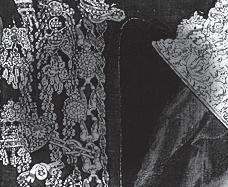


A 15 day Pilgrimage Journey Zagreb (2) Shrine Of Our Lady Of Trsat Rijeka Plitvice Lakes (2) Zadar Shrine Of Our Lady Of Sinj Split Dubrovnik (2) Medjugorje (5) Departing: 13 May • 1 Sep 2009 • Optional 3 night Rome Extension
REQUEST YOUR FREE 2009 HARVEST BROCHURE
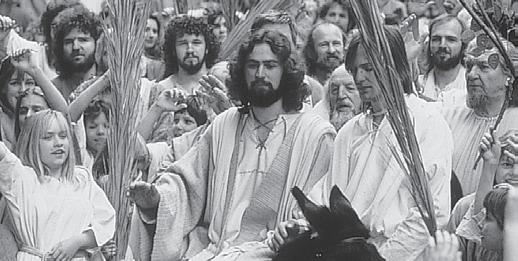
In the predominantly Catholic Philippines, the country’s bishops worked throughout the year to end the conflict between the government and the Moro Islamic Liberation Front, which has been fighting for self-rule in Mindanao since the 1970s. Despite the efforts of individual bishops, the government ended peace talks with the rebels in September.
Amid the continuing violence in Sri Lanka, Church leaders continued to appeal for the displaced, many of whom were Catholic. When the government ordered all aid workers to withdraw from Vanni as government forces
In Haiti, the food crisis caused violent protests and political havoc in April. Similar demonstrations linked to spiraling food prices struck countries in Asia, Africa and Latin America.
In Guatemala, for example, the price of tortillas, a basic food staple, rose 30 per cent in the course of only a few months. Poor Mexicans, who eat nearly a pound of tortillas a
have
day per person,
the price double in the past Page 4 January 7 2009, The Record 2008
seen
HARVEST FREE CALL 1800 819 156 or visit www.harvestpilgrimages.net.au Flightworld Travel Perth: (08) 9322 2914 • Harvey World Travel Osborne Park: (08) 9443 6266 Oberammergau 2010 PASSION PLAY Presented once every 10 years DON’T MISS OUT! Link before or after your 2010 pilgrimage BOOKINGS NOW OPEN VISITATIONS OF MARY With Fr Patrick Vaughan Departing 29th July 2009 Participate in the world’s most requested Marian journey as we come to encounter first hand the tangible grace behind Our Lady’s life changing visitations. A 15 day Pilgrimage Lisbon (1) Fatima Anniversary (3) Avila (2) Burgos Garabandal (2) Loyola Lourdes (3) Also Departing: 9 May • 9 Jun • 9 Sep • 9 Oct 2009 • Optional 6 night Medjugorje Extension or 9 night Graces of France Extension GRACES OF FRANCE With Fr Maroun El Kazzi Departing 20th June 2009 Journey the pathways
NEW PILGRIMAGE ITINERARY 2009
who have been abandoned
orphaned by war eat dinner at the Salesian-run Don Bosco centre in Goma in eastern Congo in this
20 photo. Fighting in eastern Congo displaced more than 250,000 people in 2008. More than 1 million were already displaced from previous years of fighting. Children are almost always the victims who cannot speak for themselves.
The Parish The Nation The World Read it in The Record
PHOTO: CNS/FINBARR O’REILLY, REUTERS
The past 12 months were an important interfaith year
Overcoming the thorny problems of history a key challenge

Meeting: A cardinal looks at a religious book with a Muslim scholar during a session of the Catholic-Muslim Forum at the Vatican in this November 4 photo. The forum marked a milestone in relations between the two faiths. The photo below shows a detail of a book containing over 1,000 names of known Boston victims of clergy sexual abuse. The book was presented to Pope Benedict XVI at his meeting with five survivors of sexual abuse by clergy on April 17 at the apostolic nunciature in Washington during his celebrated visit to the US.
■
By John Thavis
VATICAN CITY (CNS) - Pope Benedict XVI will look back on 2008 as an important year for interreligious dialogue, with the inauguration of a major CatholicMuslim forum, notable meetings with Jews in the United States, and the opening of ecology as a new terrain for interfaith cooperation. At the same time, discrimination and violence against minority Christian communities in Asia and the Middle East clouded the interfaith horizon and pushed human
rights to the top of the Vatican’s dialogue agenda.
The initial meeting at the Vatican of the Catholic-Muslim Forum in November was a milestone in relations between the two faiths, and represented a remarkable turnaround after a low point in dialogue two years earlier.
The theme of the encounter was love of God and neighbour, and the Vatican representatives made sure to highlight respect for human rights - including the rights of minority faith communities - as an essential area of cooperation.
Pope Benedict addressed the 56
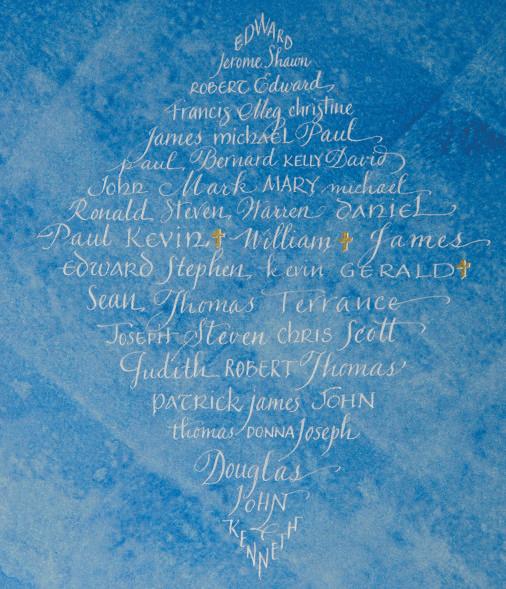
final statement that “faith and reason are intrinsically nonviolent.”
That was a key point raised by Pope Benedict in a 2006 speech in Regensburg, Germany, which prompted Muslim protests because it appeared to challenge Islam on the issue of violence.
The Pope was at the center of another interfaith episode when, at a Holy Saturday liturgy in St. Peter’s Basilica, he baptised a Muslimborn journalist, Magdi Allam.
The Vatican downplayed its significance, but Allam did not; he issued an open letter that described Islam as inherently linked to terrorism and critiqued the Vatican’s own policy of dialogue with Muslims.
Worsening violence and intimidation against Iraqi Christians by Muslim extremists prompted a number of papal appeals during the year, and the Pope also condemned the violence against minority Christians by Hindu gangs in India.
The Vatican’s annual message to Hindus emphasised the Hindu tradition of nonviolence and warned that religion today is sometimes manipulated in support of violent acts.
Visiting the United States in April, the Pope met with about 200 representatives of Islam, Jainism, Buddhism, Hinduism and Judaism at the Pope John Paul II Cultural Centre in Washington. Five young people presented the pontiff with symbols representing peace from various faiths.
The Pope told the gathering that, in their attempt to discover common ground, religious leaders perhaps “have shied away from the responsibility to discuss our differences with calmness and clarity.”
Interfaith dialogue, he said, should not stop at identifying a common set of values, but go on to probe their “ultimate foundation,” the truth.
forum participants and emphasised the need for believers to show each other mutual respect and guarantee the right to freely profess and practise their faith.
In December, another major Catholic-Muslim session took place at the Vatican, this one involving representatives of the World Islamic Call Society.
The discussion theme of the three-day meeting was the responsibility of religious leaders in times of crisis.
In April, an Iranian Muslim delegation arrived for talks at the Vatican, and participants said in a
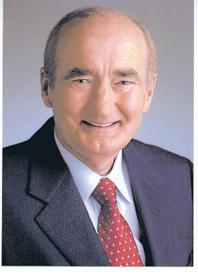
Catholic-Jewish relations came under strain early in 2008 when the Vatican published Pope Benedict’s revised prayer for the Jews for use in Tridentine-rite Good Friday liturgies. The new prayer removed old language referring to the “blindness” of the Jews, but it prays that Jews will recognise Jesus, the saviour, and that “all Israel may be saved.”
The Vatican sought to reassure Jews that the prayer, used in very limited circumstances, did not represent a step back from the teachings of the Second Vatican Council.
Church officials said the new wording referred to salvation at the end of time and was not a call for a
missionary effort among the Jews. While in the United States, the Pope added two significant events with Jewish audiences. In Washington, he met separately with Jewish representatives and told them Catholics and Jews share a special bond, and he reaffirmed the Church’s 40-year commitment to dialogue.
In New York, he attended a prayer service at a synagogue and encouraged the building of “bridges of friendship” between religions; it was only the third time a modern Pope had visited a Jewish place of worship.
Later in the year, the long-standing controversy over the sainthood cause of Pope Pius XII surfaced once again. Celebrating a memorial Mass on October 9 to mark the 50th anniversary of Pope Pius’ death, Pope Benedict defended the late Pope’s actions during World War II, saying he had acted “secretly and silently” to help save the greatest possible number of Jews. At the same time, the Vatican said Pope Benedict had decided to delay his decision on Pope Pius’ sainthood cause during a “period of reflection.”
A Vatican spokesman later asked both supporters and opponents of the cause to stop pressuring the Pope on the issue.
On a more personal note, Pope Benedict said in November that he still felt sorrow when he recalled the night in 1938 when Nazi mobs rampaged against Jews in his native Germany. The event became known as Kristallnacht, German for Night of the Broken Glass.
“I still feel pain for what happened in that tragic circumstance, whose memory must serve to ensure that similar horrors are never repeated again and that we commit ourselves, at every level, to fighting anti-Semitism and discrimination, especially by educating the younger generations in respect and mutual acceptance,” the Pope said.
Throughout the year, Pope Benedict and other Vatican officials spoke about protecting the environment as a cause where members of various faiths could find common ground. In its annual message to the world’s Buddhists in April, the Vatican said Christians and Buddhists should work together to promote respect for the earth and a safe, clean environment.
It said people need to understand that environmental protection will succeed when people understand the relationship between “the divine Creator” and the created world.
I’m John Hughes, WA’s most trusted car dealer
Is it true our company philosophy is “We are a friendly and efficient company trading with integrity and determined to give our customers the very best of service?”
Is it true I regularly publish testimonial letters from satisfied customers because of my tremendous reputation for outstanding service?
Is it true I believe that before anyone buys a pre-owned vehicle they should choose their dealer before they choose their car and that dealer should be mine? and...
Is it true I say this, because of my reputation for honesty, fair dealing, huge range of vehicles and non pushy salespeople.
Is it true when people do business with me, I guarantee they will be treated with courtesy, sincerity, professionalism and efficiency?
Is it true that I have over 40 technicians who are dedicated to getting my used cars in first class condition before sale?
January 7 2009, The Record Page 5 2008
• • • • • • Just over the Causeway on Shepperton Road, Victoria Park. Phone 9415 0011 DL 6061
Absolutely! CHOOSE YOUR DEALER BEFORE YOU CHOOSE YOUR CAR JH AB 011
JohnHughes JOHN HUGHES
PHOTOS: TOP, CNS/ L’OSSERVATORE ROMANO VIA REUTERS; BELOW, CNS/COURTESY OF JOHN SOUZA
Seen as a prelude to World Youth Day, the Pope’s journey to a battered US Church was also...
A strong dose of encouragement
■ By Carol Zimmerman
WASHINGTON (CNS) - US Catholics were repeatedly encouraged to find renewed hope in Christ during Pope Benedict XVI’s April 15-20 visit to the United States.
Whether the Pope was addressing international or religious leaders, youths or those Catholics who filled baseball stadiums in Washington and New York, he continually reiterated the trip’s theme, “Christ Our Hope,” and earnestly spoke of a “new springtime” for the Church in America.
The pontiff, in his first visit to the United States as Pope, celebrated Mass at the ballparks in both cities and spoke at the White House, the General Assembly of the United Nations and at Churches in Washington and New York. He also departed from his planned itinerary for a private meeting with victims of the clergy sex abuse crisis.
He often spoke of the “genuinely religious spirit” of the American people and praised the vitality of parish life and Church movements. But he also encouraged US Catholics to take their faith experience to a deeper level by evangelizing with renewed zeal and rejecting secularism.
Instead of criticising US Catholics as some commentators had predicted, the Pope gently urged them to be unified and to be a beacon of hope in the modern world.
The visit had been highly anticipated since it was announced in November 2007. Many wondered how the scholarly pontiff would compare with the crowd-pleasing Pope John Paul II. But in all the public venues the cheering crowds dispelled the notions of Americans not warming up to Pope John Paul’s successor.
There was pre-visit speculation about whether the Pope would address the clergy abuse scandal - which he did several times - and what he would say to Catholic college presidents - he offered them words of encouragement.
Right from the start - aboard the papal flight to the US - Pope Benedict addressed the clergy abuse crisis that had scarred the US Church, saying he was “deeply ashamed” by it. Throughout the US visit he condemned the abuse scandal and spoke of the urgent need for healing.
During a Mass at St Patrick’s Cathedral in New York for priests and religious, the Pope urged the congregation to move past divisions and scandal toward a “new sense of unity and purpose.”
In other gatherings he sounded warnings on the dangers of secularism and the misuse of freedom.
During an April 17 Mass at Nationals Park, Washington’s baseball stadium, he told 45,000 people that American society is at a moral crossroads. Three days later at a Mass at New York’s Yankee Stadium, the Pope urged more than 57,000 Catholics “to use wisely the blessings of freedom in order to build a future of hope for coming generations.”
Pope Benedict also made a special appeal to young people at the Yankee Stadium Mass, urging them to “step forward and take up the responsibility which your faith in Christ sets before you.” He offered a similar challenge to about 25,000 youths the previous day during a rally at St Joseph’s Seminary in Yonkers, New York.
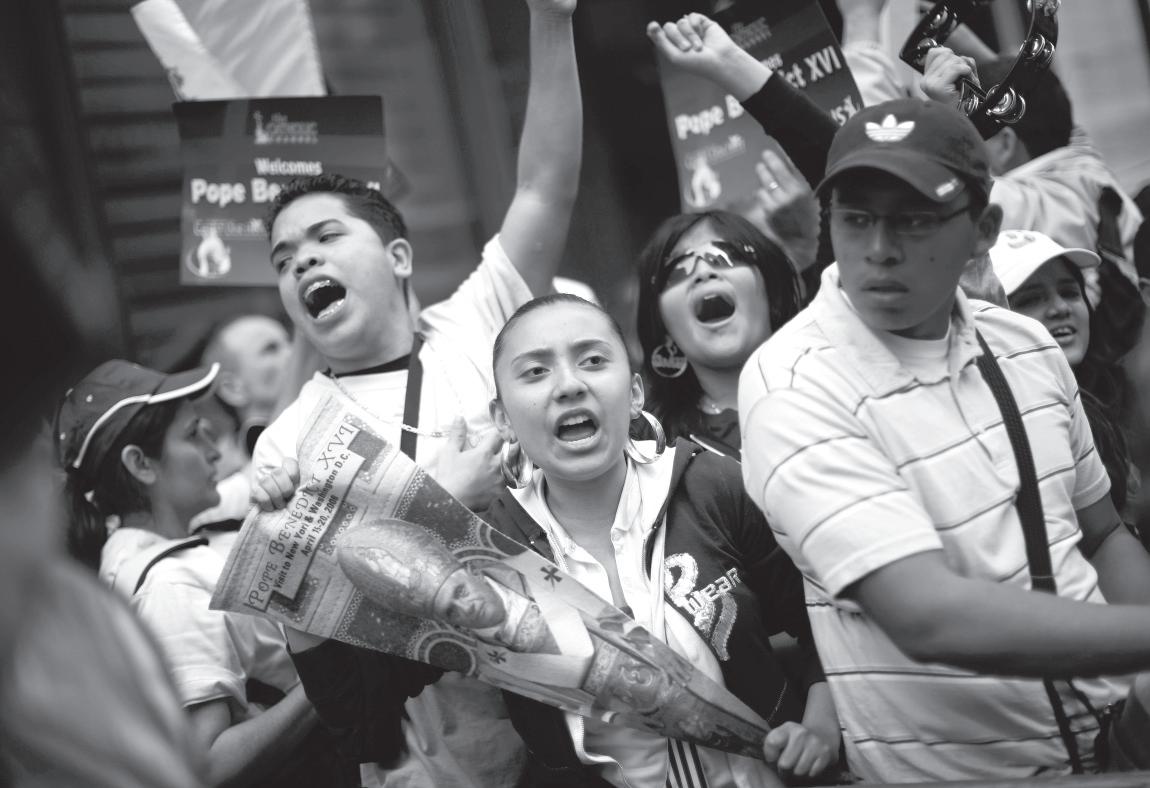
In Washington, the Pope urged 400 Catholic college presidents and diocesan education representatives at The Catholic University of America to lead students to deeper faith. He also told about 200 representatives of Islam, Jainism, Buddhism, Hinduism and Judaism at the Pope John Paul II Cultural Centre “to persevere in their collaboration” to serve society and enrich public life.
The Pope began his US visit by meeting privately with President George W. Bush after he was greeted by thousands of well-wishers during a public welcoming ceremony on the White House lawn.
He spoke to about 300 US bishops at the Basilica of the National Shrine of the Immaculate Conception encouraging them to continue their work to restore trust in the Church and its ministers.
In New York, he told the UN General Assembly that fundamental human rights “cannot be applied piecemeal” and cannot be denied or diminished because of “different cultural, political, social and even religious outlooks.”
One of his most sombre visits was at ground zero where the Pope knelt alone and offered a silent prayer. He also read a prayer aloud with a small group at his side representing survivors, the family
members of the dead and representatives of the New York Port Authority, police and fire departments.
At an ecumenical prayer service in New York he expressed concern that Christianity could slip into “fragmentation and a retreat into individualism.” Pope Benedict met separately with the Jewish participants in the interreligious meeting. He also visited a New York synagogue.
The Pope had two occasions of his own to mark while in the United States: his 81st birthday and the third anniversary of his election as Pope.
After his departure, many US Catholics said they felt a deeper connection with their spiritual leader and that the effects of the visit would last beyond the six-day trip as they planned to read and reread the texts of his speeches.
For many, what stood out the most was not the huge crowds at papal events but his private meeting at the apostolic nunciature in Washington with five victims of clergy sexual abuse.
One observer summed it up by saying the Pope did “exactly what American Catholics needed and wanted to see” from the person who is the highest authority in the Church.

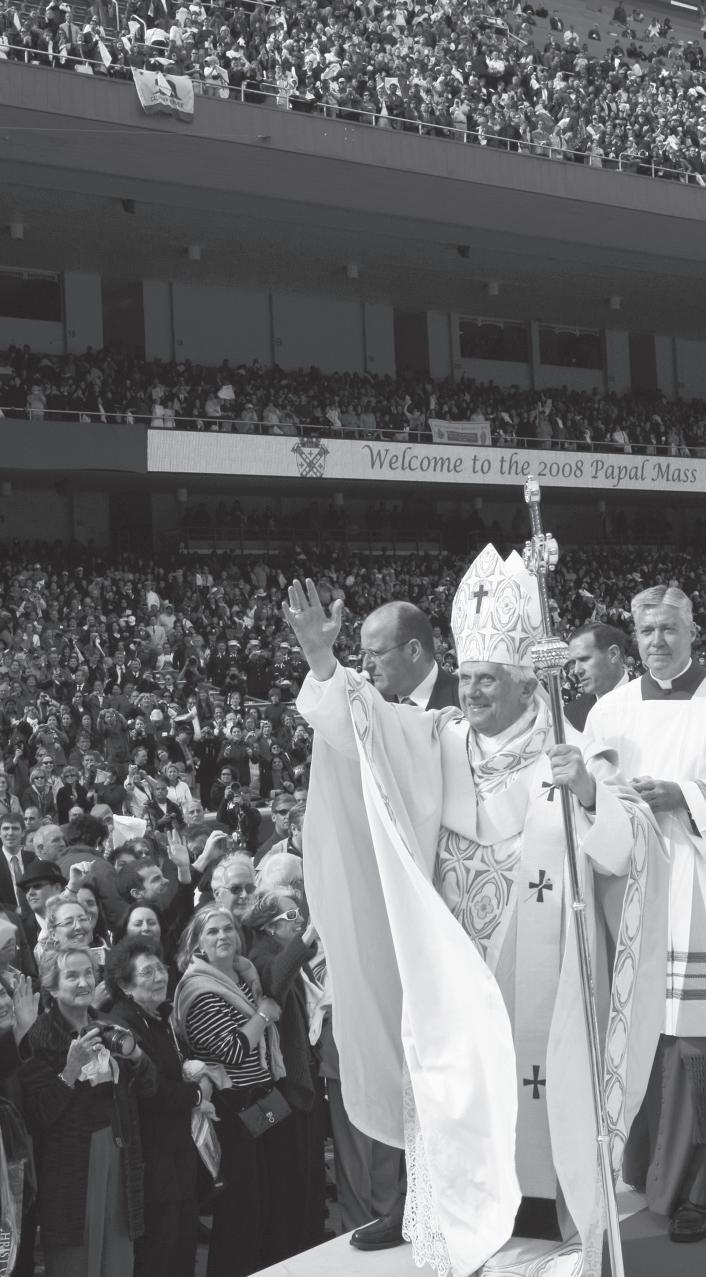
Page 6 January 7 2009, The Record
2008
Big welcome: People shout slogans as they wait along the route for the motorcade for Pope Benedict XVI in New York on April 19. Benedict XVI’s visit to the US was widely regarded as a sucsess, in part because of the encouragement his presence in the country gave to Catholics.
PHOTO: CNSCARLOS BARRIA, REUTERS
PHOTOS: CNS
Happy: Pope Benedict XVI, above, waves to the crowd as he departs Yankee Stadium after celebrating Mass in New York on April 20. The day before, Bishops and priests are reflected in a shop window as they arrive at St Patrick’s Cathedral to attend a Mass celebrated by the Pope.
Church leaders tried to keep world’s focus on the person
Violating human dignity the root of all conflict, says Vatican official

 ■ By Carol Glatz
■ By Carol Glatz
VATICAN CITY (CNS) - Not respecting human dignity lies at the root of all conflict, including the renewed violence in the Gaza Strip, said a top Vatican official and longtime diplomat.
Religious tensions play a minor role in fueling world conflicts; rather, countless economic and social injustices are what foment violence, said Cardinal Renato Martino, head of the Pontifical Council for Justice and Peace.
“For decades, human dignity has been trampled in the Gaza Strip; hatred and homicidal fundamentalism find fodder” in social and economic injustice, he said in an interview published in the Vatican’s newspaper L’Osservatore Romano on January 1.
He said the use of arms in the Middle East must stop because “dialogue is the only possible way to bring peace” in the Holy Land.
The “fresh, ferocious outbreak of violence” and renewed military action in Gaza will not break the cycle of attacks and reprisals in the Holy Land, he said.
“The current excessive imbalance between military spending and development aid - (which) exists everywhere, including the Gaza Strip - shows a deep distrust in the power of dialogue, a deep distrust in the human being,” said the cardinal. Only dialogue can end the world’s conflicts, he added. But talks must include rectifying long-standing injustices, he said.
The international community, diplomats and local governments must remember that “the source of every conflict, not to mention the degradation of the environment and the social and economic injustices” that trigger the many crises plaguing communities today, is
“contempt for, neglect of, or only partial agreement with the principle of respect for human dignity,” he said.
In the article that appeared in the Vatican newspaper’s first issue of 2009, Cardinal Martino assessed a variety of world events and issues that attracted the attention of the Vatican in 2008.
He said the scandal of hunger in the world continues to be of concern.
Famine and lack of nutrition are to be blamed on the poor distribution of plentiful foodstuffs, not overpopulation, he said.
The responsibility for the food crisis “is in the hands of unscrupulous people who focus only on profit and certainly not on the well-being of all people,” said Cardinal Martino.
A more just system of distribution and not the manufacturing of genetically modified foods is the key to addressing the problem, he said.
“If one wants to pursue GMOs (genetically modified organisms) one can freely do so, but without hiding that it’s a way to make more profits,” he said.
Utilising genetically modified foods calls for “prudence” because genetically modifying organisms can increase yields in some instances, he said, but people must not abuse their power to be able to manipulate nature.
Cardinal Martino also commented on the Vatican’s opposition to a nonbinding declaration brought before the UN General Assembly in December to endorse the universal decriminalization of homosexuality.
He said the Church is strongly opposed to any laws that criminalise homosexuality.
However, the Vatican noted that the way the resolution was written
could open the way to the recognition of same-sex marriages and could limit the right of the Catholic Church and other religious bodies to teach that while homosexual behaviour is not a criminal offence it is not morally acceptable.
Cardinal Martino said same-sex couples “can do what they want, but don’t claim (same-sex unions) are equal” to marriage between a man and a woman.
“We received the precious gift of freedom from God, even the freedom to choose to sin or not,” he said.
He said instead of trying to insert new categories needing human rights protections people should focus their energy on guaranteeing respect for all the rights that were agreed upon 60 years ago and are still violated in many nations.

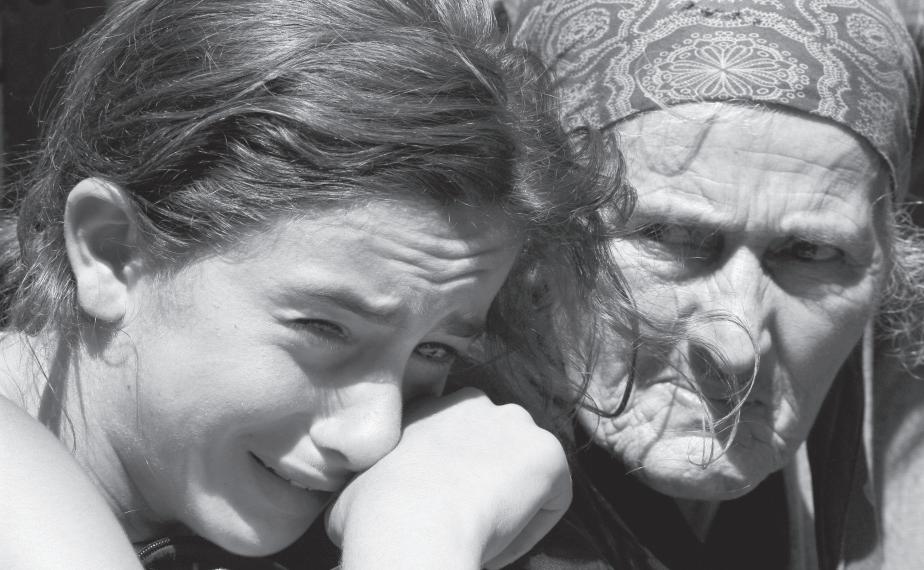
January 7 2009, The Record Page 7 2008
PHOTOS: TOP, CNS/PARTH SANYAL, REUTERS, TOP RIGHT, CNS/THAIER AL-SUDANI, REUTERS
The faces of suffering: A Christian girl, whose face is marked by burns she received in sectarian violence, sits in a shelter in Raikia village in the eastern Indian state of Orissa on August 31. Thousands had sought shelter in makeshift government camps in eastern India after being driven from their homes by mobs that attacked Christian communities. The attacks followed the murder of a Hindu leader. Elsewhere in the year, women cried as they attended a memorial Mass for Chaldean Archbishop Paulos Faraj Rahho of Mosul, Iraq, on March 18. Archbishop Rahho was kidnapped on February 29 in an attack that left his driver and two bodyguards dead. His body was found outside Mosul on March 13.
Attention: Palestinians carry the body of Lama Hamdan, 4, during her funeral in the town of Beit Hanoun in the northern Gaza Strip on December 30, killed in anair raid as they were taking out the trash near their home, medical workers said. Photo below: Earlier last year, people react as they leave Gori, a Georgian city near the province of South Ossetia on August 13. The UN reported that close to 100,000 people had been displaced by the military conflict in Georgia.
PHOTOS: CNS
African Catholics offer gift of their culture to celebration of the Mass Choir injects African spirit into Mass
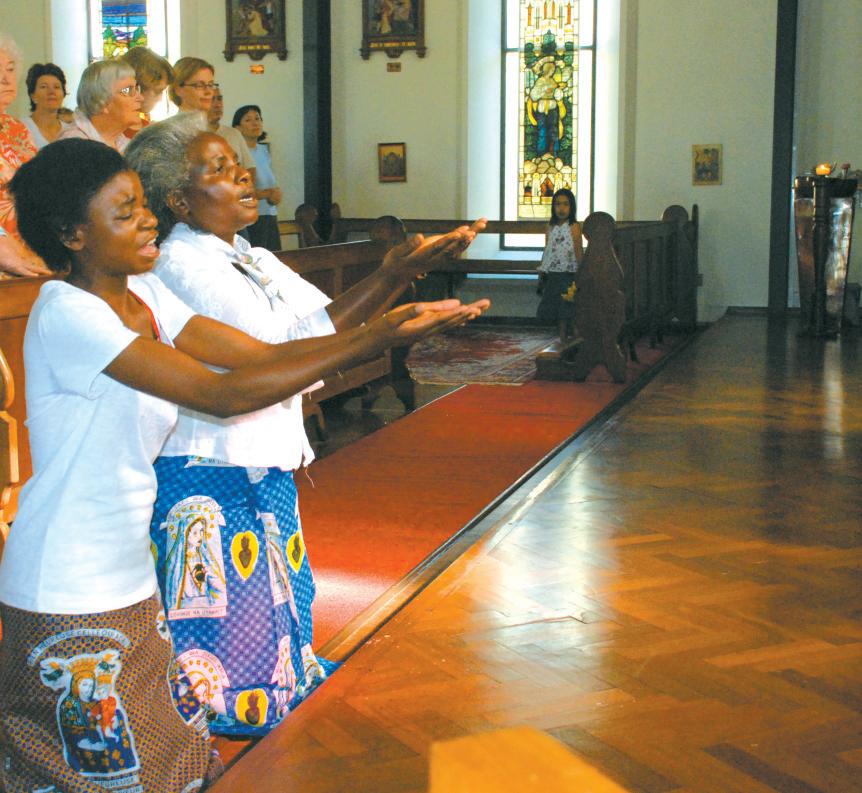
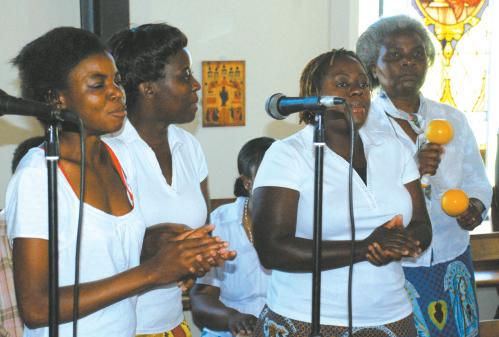
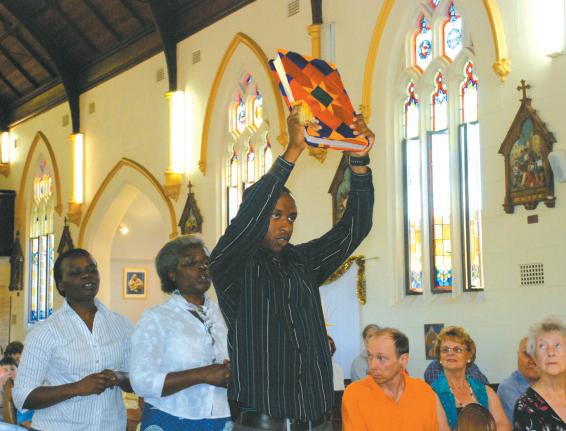 ■ By Robert Hiini
■ By Robert Hiini
The newly formed ‘Memories of Africa’ choir helped hundreds of Catholics welcome in the new year, singing hymns from Zambia and Zimbabwe at a Mass celebrated at St Thomas the Apostle Parish, Claremont on January 1.
The 10-member choir, made up of parishioners from FloreatWembley and Dianella, sang songs in the Zimbabwean language Shona, in Tonga, a language spoken near the border between Zambia and Zimbabwe, and Bemba and Chewa, both Zambian languages.
Hymns weren’t the only spir-
itual provisions the choir supplied as they led the congregation in expressive Mass parts that are common to those countries and in Catholic parishes across southern Africa.
The choir formed late last year when the Kwaramba family, originally from Zimbabwe met the Ngoma and Mutoya families, originally from Zambia, at Our Lady’s Assumption Parish in Dianella.
They first sang at the parish of Our Lady of Victories in Wembley in August last year.
At the New Year’s Day Mass, Parish Priest of Claremont, Fr Charles Waddell, told parishioners that the collection taken up during
the Mass would be gifted to the fledgling choir.
The money will no doubt be put to good use as Mrs Kwaramba says that they aim to grow a “very big” African choir for Mass goers throughout Perth and especially expatriate Africans who might miss the way Mass is celebrated back in their country of origin.
Choir member Bibiana Kwaramba says that anyone from Africa who wants to sing songs from their own region is welcome to join, even if they are unable to commit to regular practices.
For more information about the Memories of Africa Choir, contact Bibiana on 9451 6602 or Rose on 9276 8138.
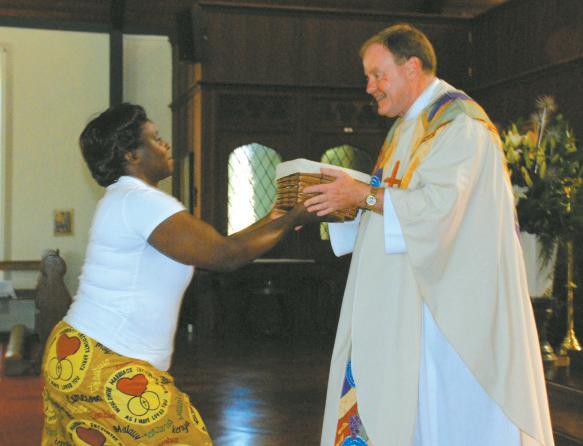
Answers give youth a counter-cultural advantage
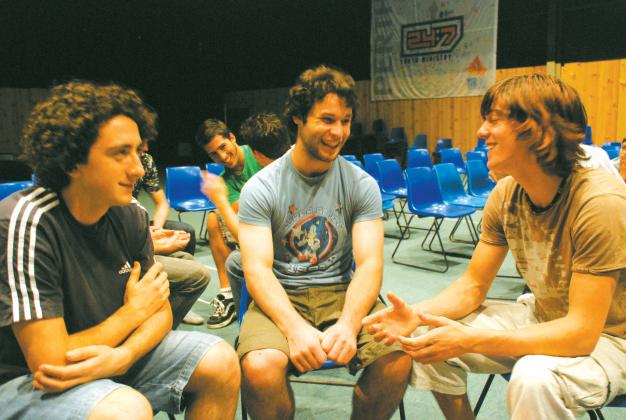 ■ By Robert Hiini
■ By Robert Hiini
Young people asking honest questions about sexuality are being given honest answers by some of this year’s students from the Acts 2 Come College of Mission of Evangelisation.
For the past 10 weeks, two students in the college’s leadership stream, Giselle Williams and Sarah Laundy, have run the Theology of the Body for Teens 12 week DVD series in conjunction with 24:7 Youth Ministry in Osborne Park.
The series covers the issues of dating, sexual experimentation, gender and marriage with 12 core “lessons” and four separate “guys only” and “girls only” sessions.
24:7 volunteer Simone Cummins says that the DVD series, presented by US educators Brain Butler and Jason and Crystalina Evert, provides a positive and practical message about the beauty and glory of sex and relationships as God intended them.
“A lot of these students have never even heard of Theology of the Body and this is presented in a fun and really simple, understandable way.” Mike Sandrini, 24:7’s Youth
Director, says that their young people have enjoyed the series.
“Most of us will be called to be married. They’re just wanting to know answers, how to become a husband and a father or a wife and a mother: Becoming the best human beings they can be.”
“You mention sex in a room of young people and you have their attention because its something that’s just thrown at you,” Ms Cummins adds.
“On TV, in state and Catholic schools, on posters and magazines or on the back of buses – it’s everywhere.”
“Kids want to know, and I think most of them believe that deep down there’s something more and this program addresses that.”
For one of their Friday sessions last month, they asked a young married couple to come and talk about their experience in addition to the DVD series.
Seated on a couch in front of the gathered youth, Acts 2 Come student Sarah Laundy interviewed her brother Patrick and his wife, also named Sarah, describing them as a “success story” of the Catholic way to date and fall in love.
Page 8 January 7 2009, The Record THE PARISH
Colourful: Caroline Mutoya, left, and Bibiana Kwaramba, singing in Chewa - an African language - raise their arms during the Kyrie, part of the African Mass celebrated at St Thomas the Apostle Church in Claremont on New Year’s Day. Choir members, top right, sing and clap during the Mass. Kudzai Kwaramba, right, holds the Gospel aloft as he bears it towards the sanctuary. Fr Charles Waddell, bottom, receives the offertory collection from Rose Ngoma.
PHOTOS: ROBERT HIINI
CONTINUED PAGE 11
Enjoying the moment: Three participants at Theology of the Body for Teens take time out to discuss what it really means to be a man created in the image and likeness of God. The seminar was run by the 24:7 Youth Ministry and Acts 2 Come College of Mission. PHOTO: ROBERT HIINI
Perth women’s community plans to grow New community to throw open its doors
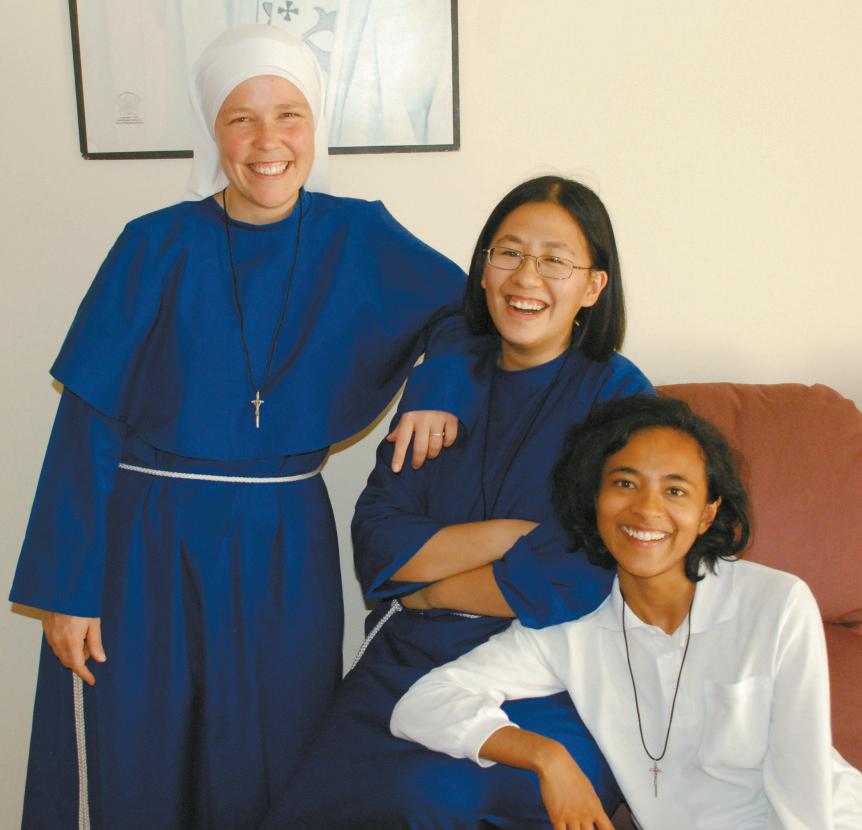
Hobart’s prelate criticises media papal reporting
Archbishop puzzled by response to Papal address
■ By Anthony Barich
HOBART Archbishop Adrian Doyle has defended Pope Benedict XVI, saying the media have unnecessarily created an “adversarial environment” between the Holy Father and the gay community.
The Archbishop says he was puzzled by a December 24 report in Tasmania’s News Limited publication The Mercury – and radio, television and internet media outlets around Australia and the world - about Pope Benedict attacking the gay community.
Media reports had the Pope saying that ‘gender theory’ blurred the distinction between male and female and called for “an ecology of the human being” to protect mankind “from self-destruction”.
ABC News had the Pontiff saying that saving people from homosexual or transsexual behaviour is just as important as saving the rainforest from destruction.
During the address, given to curial cardinals at the Vatican on December 22, Pope Benedict discussed Pope Paul VI’s encyclical Humanae Vitae issued in 1968 and which addressed the issue of contraception in marriage.
“To use the quote in the Mercury headline – ‘homosexuality is as great a threat as rainforest destruction’ – is completely incorrect and inflammatory,” Archbishop Doyle said.
He said the Pope’s address focuses on the events of World Youth Day 2008 in Sydney and has the theme of an “authentic vision of ecology”, and that “if we respect God’s creation in the earth and the environment, as we must, then we must also respect God’s creation of humankind and the wonderful way human beings were created. If we fail to keep the two things in balance, we strike trouble,” the Archbishop said.
“To me, this is a fundamental message focused around the current issues of climate change,”
Archbishop Hart said.
Archbishop Doyle said that Pope Benedict XVI has spoken of joy being the expression of happiness, of being in harmony with oneself, which is only possible if one is in harmony with God and His creation.
“Sadly, it is the media who have created the adversarial environment in this case by choosing to misquote key parts of the speech of His Holiness,” Archbishop Doyle said.
■ By Robert Hiini
PERTH’S newest religious order is throwing open its doors to women who are asking themselves if they are called to be a religious sister.
The Missionaries of the Gospel, a fledgling community inspired by the life and teaching of the late John Paul II, will host a discernment retreat at their house in Willagee from Friday January 30 to Sunday Fedruary 1, promising that attendees “will be able to taste what it is like to live our way of life for a couple of days.”
At present, the nascent community consists of the recently consecrated Sr Bernadette MG and postulants Beatrice Yong and Natalie Thomas.
Speaking to The Record at their Willagee home, the three women explained why, in these postmodern times of agnosticism and heightened individualism, they should choose to be so counter cultural.
“Sometimes there are one too many signs that you can’t ignore,” says Ms Yong regarding her own entrance into the community.
“I didn’t look for them but I recognised some signs when they came along.”
But exactly what kind of life is she postulating? What does it mean to be a religious; to be a sister today?
Prefacing her comments as a work in progress, the community’s “Mother” or leader Sr Brenadette, says that a religious is someone
“called by God to give themselves completely and with an undivided heart to Christ and His mission in the Church, someone who is always wanting to give more of themselves.”
Far from being a slight against marriage and the lay vocation that was given prominence at the Second Vatican Council, she says that a religious vocation is simply a different call from God that people who are discerning can arrive at from a variety of different life experiences.
“They may have been in a few relationships or not and they value families and see the great need for them but there’s still a “more” that they want to give.”
“They don’t want to feel bound to a particular place but to the whole Church, to be available for the Lord to use them in any way; to take Jesus to the world,” Sr Bernadette says.
The women say that simply living in a community with each other is a sign of hope to the world; that despite their very different personalities and cultural backgrounds, God is giving them the grace to live together despite their daily struggles.
Natalie Thomas describes herself as a “perpetual discerner” before she entered the community last year.
She considered her vocation while studying in the relative solitude of Melbourne, far from her very active involvement in Catholic life in Perth.
“I was commitment phobic. I thought about marriage and reli-
gious life and they were both very attractive to me.”
“I saw the beauty of marriage but there was a deeper inkling,” Ms Thomas said, recounting her exploration of several different orders before settling on the Missionaries of the Gospel.
Like all religious congregations, the Missionaries have a charism – a special gift of the Holy Spirit – that shapes the way their faith is lived out.
“For us, following in the footsteps of John Paul II means sharing the faith in a very personal and experiential way; developing relationships, not preaching at anyone,” Sr Bernadette said.
“It’s a very different way of being with people and that’s focused on building relationships and experiencing Christ and revealing Christ through those relationships, through the love that is shared between us.”
“It sounds really airy fairy but we’ve seen John Paul II do that in a very tangible and fresh kind of way that a lot of young people are really drawn to.
“There’s an authenticity there. He’s speaking about the truth but he’s not shy to be human as well; to deal with the human frailties that come with life.”
The retreat will feature an introduction to the Missionaries of the Gospel community, personal testimony and a talk about the process of discerning God’s will.
For more information about the Missionaries of the Gospel and their discernment retreat go to www.mg.org.au or email info@mg.org.au.
Without mentioning the word homosexuality, the Pope instead said the Church must save man from his own destruction, and that “man wants to create himself and to arrange always and exclusively that which concerns him. But this means living contrary to the truth and … to the creator Spirit.”
Archbishop Doyle said he had read the address the Pope gave to the Curia.
He said it makes no reference to, or condemns homosexuals or lesbians.
He added that over the festive season, all members of Tasmania’s communities were welcome to attend one of the many services being held across the State.
Responding to media reports/ allegations that the Pope said humanity needs to be ‘saved from homosexuality’, Auxiliary Bishop of Canberra and Goulburn Pat Power told ABC that he believes the Pontiff was “probably reacting to more militant elements within the gay community”.
“When I heard that message of the Pope today I said, ‘What’s that saying to those people that I love and share a great deal with’,” he said.
Anti-trafficking law hailed
WASHINGTON (CNS) - The reauthorisation of an anti-trafficking law signed at the White House on December 23 was hailed by the chairman of the US bishops’ migration committee as “an important step toward eradicating this scourge.”
Bishop John Wester of Salt Lake City said in a statement that President George W. Bush had done much to elevate public awareness about human trafficking. He encouraged President-elect Barack Obama and the incoming Congress to “remain vigilant and continue to work to end this abominable practice.”
Congress passed the William Wilberforce Trafficking Victims Protection Reauthorisation Act on December 10. Among the additions to the bill from previous versions are new services and benefits to trafficking victims, said Julianne Duncan, associate director of children’s services for Migration and Refugee Services of the US Conference of Catholic Bishops, in the same release as Bishop Wester’s comments.
Some benefits, for instance, will now be available immediately for trafficking victims who have a pending application for a visa, Duncan said.
Other changes will aid vulnerable children who are at risk of being trafficked, and make more children eligible for permanent legal status and the benefits of the refugee program. Duncan said the revised program also will require that children in the anti-trafficking program be placed in the least restrictive settings and receive home study before they are released. It also will provide protections for children who are not admitted to the United States and are returned to their home countries, she said.
The White House said the bill was named for English abolitionist William Wilberforce, who led the parliamentary movement against the British slave trade in the early 19th century. It authorises appropriations through until the 2011 fiscal year.
January 7 2009, The Record THE PARISH
United: Sr Bernadette, at left, with Missionaries of the Gospel novices Beatrice Yong, centre, and Natalie Thomas. The three women are the first members of the Missionaries of the Gospel, a new religious community for women established in Perth that will be conducting a retreat for women considering the possibilities of religious life. The retreat will be in Willagee and run over the weekend of Friday January 30 to Sunday February 1.
PHOTO: ROBERT HIINI
Page 9
The International year of Astronomy
Gallileo: Vatican joins in star-studded celebrations
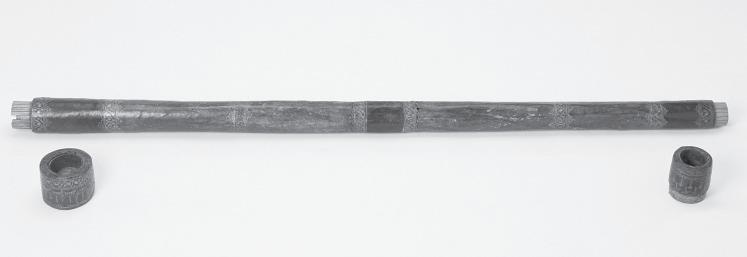
Groundbreaking: This image shows Galileo Galilei’s original telescope. Between 1608 and early 1610 he developed the first instrument that combined glass lenses for a closer view of the cosmos. The International Year of Astronomy coincides with the 400th anniversary of the first use of the telescope. PHOTO: CNS/COURTESY OF INSTITUTE AND
■
By Carol Glatz
VATICAN CITY (CNS) -- As more than 130 countries celebrate the International Year of Astronomy, the Vatican also turned its gaze toward the heavens.
The year, which began Jan. 1, was established by the United Nations to coincide with the 400th anniversary of Galileo Galilei’s first use of the telescope to observe the cosmos.
The Vatican also is celebrating the star-studded jubilee year, as the Vatican Museums, the Vatican Observatory and other Vatican offices participate in several special initiatives.
In late December, Pope Benedict XVI rang in the year of astronomy early by sending his greetings to those participating in the yearlong celebration.
The pope repeatedly has praised Galileo, calling him a man of faith who “saw nature as a book written by God.”
The pope also has said the discoveries of science and astronomy can help people better appreciate the wonders of God’s creation.
As part of the astronomy year, Vatican astronomer Jesuit Brother Guy Consolmagno is one of more than 50 scientists from around the world who is contributing to a new Cosmic Diary blog The U.S. Jesuit and other contributors reveal in the blog -- www.cosmicdiary.org -- what it’s like to be an astronomer and explain details of their research.
The Vatican Observatory also will help organize a week on astrobiology at the Pontifical Academy of Sciences in November.
Astrobiology studies life in the universe and is hot on the hunt for extraterrestrial life and the socalled “Goldilocks planet.” Like the porridge this childhood storybook character gobbles up, it’s a theoretical planet that is not too hot and not too cold, but just the right distance from the sun to sustain life.
The observatory also is partnering with the Pontifical Commission for Vatican City State to publish a book on the history of astronomy and the Vatican.
In June a weeklong international symposium will cover the role of astronomy in the 21st century, science education and the dialogue that is needed between science and culture.
A special exhibit will open in October at the Vatican Museums displaying historical astronomical instruments. It will showcase antique instruments, spanning time from Galileo to models of the enormous telescopes used
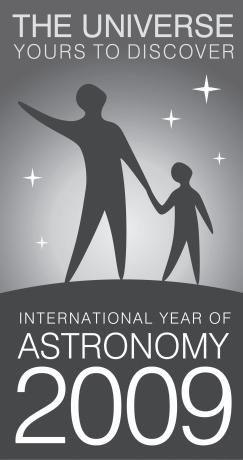

Celebrating his legacy: The image at top is the official logo marking the International Year of Astronomy 2009. The initiative is a global celebration sponsored by the International Astronomical Union, UNESCO and several other science groups. It coincides with the 400th anniversary of the first use of an astronomical telescope by Galileo Galilei, who is represented below. TOP IMAGE: CNS/COURTESY OF INTERNATIONAL YEAR OF ASTRONOMY 2009. BOTTOM IMAGE: CNS
in astronomical research today. Lastly, a large statue of Galileo is supposed to be erected somewhere on Vatican grounds. Paid for through private donations, the work of art was commissioned by the Pontifical Academy of Sciences to honor the 17th-century scientist. So far, there has been no word yet on when the statue will move into its new home.
A new Rector for St Thomas More College
Archbishop Hickey has announced the appointment of Brother Rob Callen, a Christian Brother, as the new Rector for St Thomas More College. He will succeed Father Kevin Long, who will be the new Rector of St. Charles Seminary.
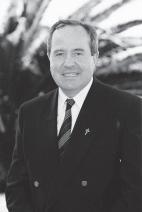
This is the first time a Christian Brother has held this position in WA, although a Christian Brother is Rector of St Leo’s College in Brisbane and a Marist Brother is Rector of Aquinas College in Adelaide.
Some church leaders expressed how the celebrations finally will put to rest the long suspicion that the church is hostile toward science. Only 16 years have passed since Pope John Paul II formally acknowledged that the church erred when it condemned the Italian astronomer for maintaining that the earth revolved around the sun.
Even though it happened some 400 years ago, “the dramatic clash of some churchmen with Galileo has left wounds that are still open,” wrote Jesuit Father Jose Funes, director of the Vatican Observatory, in the Vatican newspaper L’Osservatore Romano.
He said the Galileo case may never be closed in a way that would make everyone happy.
“The church in some way recognized its mistakes” regarding Galileo but “perhaps it could have done better: One can always do better,” he wrote, adding that he hoped the year would help smooth strained relations between faith and science.
One Vatican official recently proposed that Galileo would make “the ideal patron saint for dialogue between science and faith.” Archbishop Gianfranco Ravasi, president of the Pontifical Council for Culture, told Vatican Radio that Galileo, as a man of science and faith, showed the two were compatible as long as each operated within its specific field.
The good that came from the “dark shadow” of Galileo’s condemnation was discovering theology should never, as it had during Galileo’s time, use science to prove religious objectives especially in ways that hinder scientific study, he said.
But, he added, science also must not look down on theology as intellectually inferior -- as if it were a kind of depository for a “Paleolithic intellect of the past.”
The archbishop made the comments while he was participating in the culture council’s congress on “Science 400 Years After Galileo Galilei.” Cardinal Tarcisio Bertone, Vatican secretary of state, also participated in the November congress.
Cardinal Bertone said Galileo helped transform the nature of knowledge so that it would no longer be based on the certainties established by tradition, but on the truth derived from scientific experimentation. However, he added, science must not completely divorce itself from moral traditions and laws which can help ensure that scientific developments remain ethical and at the true service of humanity.
Brother Rob has recently returned to Perth from studies at Boston College in the USA where he completed post graduate studies with an MA in Pastoral Ministry with a concentration in Youth and Young Adult faith.
He is a graduate of UWA. In 1986 he completed a Graduate Diploma in Religious Education at the Institute of Religious Education in Dundalk, Ireland.
Immediately before going to Boston, Brother Rob was Director of Campus Ministry at Trinity College where he introduced the very successful Kairos and Quest
Retreats. He has been leading groups of students to India on immersion experiences for the past 20 years.
He has had extensive leadership experience. Before returning to Perth in 2001 he was Principal of St John’s College, Whyalla, and then Assistant to the Headmaster at Saint Ignatius College in Adelaide. Brother Rob said that he was honoured by the Archbishop’s appointment and that he looked forward to being engaged with the young people at the College. He said he was very conscious of the fine traditions of the College and he intended to uphold those traditions of academic excellence, community service, pastoral care and faith formation.
He looked forward to working closely with the excellent staff who have maintained the high reputation of St Thomas More College over many years.
He was very pleased, also, to know that the Archbishop would supply a priest to ensure that the chapel would continue as a special centre for worship.
Hilton crib focuses on the essence of His coming
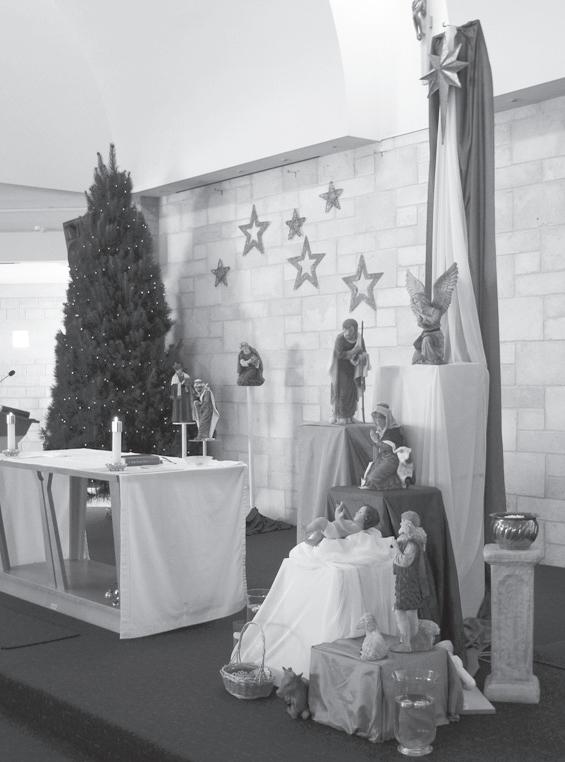
January 7 2009, The Record
MUSEUM
THE HISTORY OF SCIENCE IN FLORENCE, ITALY
OF
Simplicity and elegance: A different look to the traditional Nativity scene created by Fr Patrick Lim at Our Lady of Mt Carmel Parish in Hilston. PHOTO: EUGEN MATTES
Page 10
Nollamara visit comes at right time
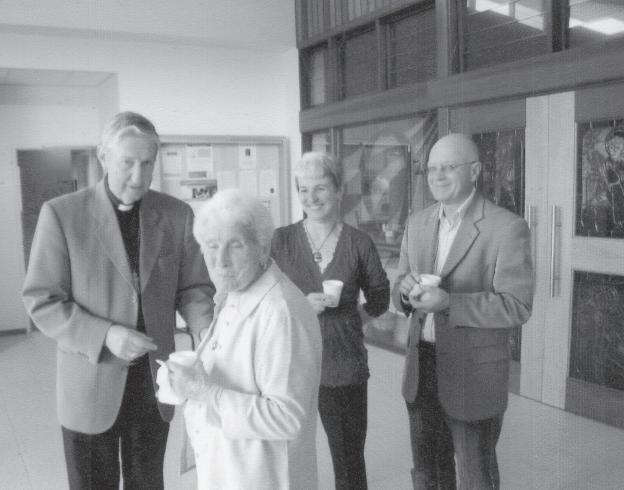
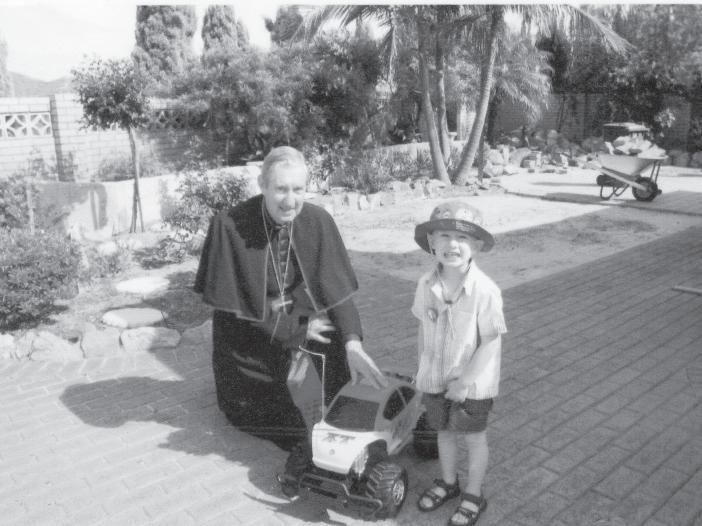
Archbishop Barry Hickey’s formal visitation to Our Lady of Lourdes Parish, Nollamara, last November coincided with the 50th anniversary of the establishment of the parish in 1958 and the 150th anniversary of Our Lady’s apparitions at Lourdes in 1858. The Parish Priest, Fr Laurence Murphy SDS, is only the third parish priest

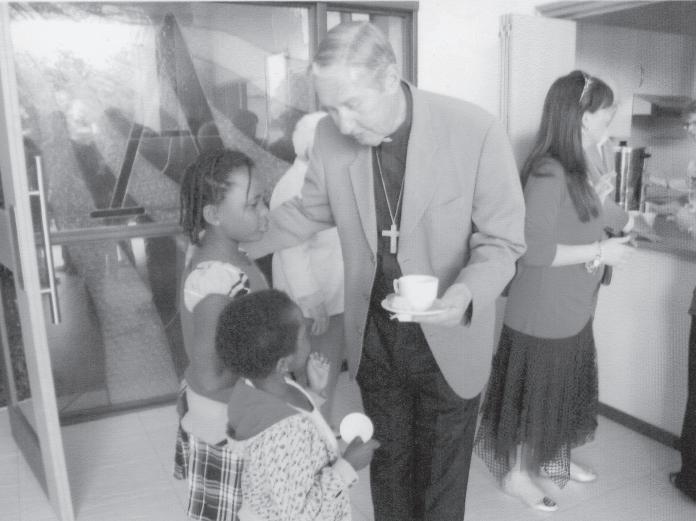
in the parish’s 50 years. Archbishop Hickey said that the parish had a good spirit and numerous groups and organisations to give life to the parish.
The housebound and the sick were well looked after by the priest, acolytes and special ministers, and a characteristic of the parish was the welcome given to people with disabilities at all weekend
Bunbury wall rises
Work to build the massive retaining walls of Bunbury’s historic Catholic Cathedral Precinct is nearing completion with the last blocks laid in early December.
Commenting on the completion of the walls Bishop Gerard Holohan of Bunbury said the architect, engineers and contractors have done an excellent job.
“The finished product looks fantastic,” he said.
It was a big job to excavate the foundations, lay all these heavy
blocks and then backfill and compact the site. The retaining of the site is an important part of the process to ensure the Cathedral will stand on solid ground” he said.
“The site has now taken shape and you begin to get a perspective of the outlook from the Cathedral Precinct,” Bishop Holohan said.
A team of retaining wall and civil works specialists have constructed the wall from reconstituted limestone.
Masses and other activities. An increase in new families in the area had seen Baptisms rise to 48 last year. Archbishop Hickey is pictured above with older and younger parishioners at various gatherings at which he was available to parishioners during the visitation.
PHOTOS: COURTESY NOLLAMARA PARISH
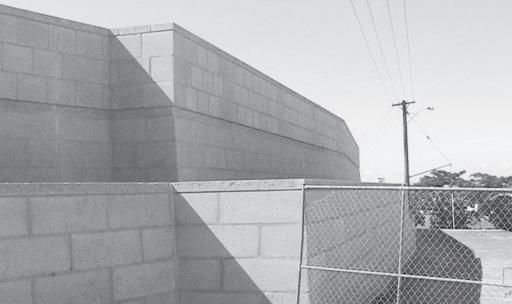
Fr Gatt makes it 17 years on the telephone
■ By Robert Hiini
For the seventeenth year in a row, Fr Michael Gatt and his team of volunteers fielded calls from anyone who was troubled or alone over Christmas.
The 24 hour Gatt-Life-Line opened on December 21 to take anonymous and confidential calls from anywhere in the world through to New Year’s Eve.
Since 1991, Fr Gatt and his team of volunteers have received calls from people experiencing loneliness, depression, addiction issues, financial hardship, sexual problems, domestic violence and feelings of suicide.
The service averages 80100 calls each year with some coming from as far afield as Canada.
Apart from his volunteers, Fr Gatt, Parish Priest of St Kieran’s, Osborne Park, is given a great deal of support from medical practitioners and specialists throughout Perth who offer their services for any referrals that might eventuate from the calls.
In a pre-Christmas interview, Fr Gatt said that while Christmas is a time of happiness for most people, it is also a time to be thoughtful; to reach out to those who find the season a difficult and desolate time.
Fr Gatt said that giving to others “for nothing” is the only true source of authentic Christmas joy.
“For me the last 15 days of December are the best of the year. You get that real joy in connecting with people and that’s something sacred.”
The Gatt Life Line received fewer calls for financial assistance this year which Fr Gatt attributes to the Federal Government’s recent stimulus package.
In his parish’s bulletin, Fr Gatt thanked everyone for their donations totaling $1225 and said that he was aware of one person making a $1000 donation to the Archbishop’s annual LifeLink Appeal via the help line.
Seminars help avoid ‘the crappy relationships’
Continued from Page 8
The couple described how they met at the 2006 Embrace the Grace Youth Conference in New Norcia when they were both 19 years old.
Patrick described the intense pressure he felt to have a girlfriend when he was growing up and Sarah spoke about loneliness and looking for a boyfriend for the wrong reasons.
“It wasn’t until I embraced being single that I thought, this is cool, I can actually use this time to my advantage. God was just waiting for me to be comfortable with myself before finding that someone,” Ms Laundy said.
Ms Laundy said prior to finding her husband Patrick, it was difficult to meet guys who didn’t want pre-marital sex.
“You’ve got to be really strong
and have standards so you don’t get sucked into crappy relationships,” she told the crowd.
While cautioning young people about having a naïve view of some of marriages difficulties, Patrick said that the “first day I met Sarah I knew I was going to marry her,” giving details of the way he proposed at the crowd’s request.
Giselle Williams, who will graduate from the college in April next year, says that while they advertised the Theology of the Body for Teens series in 30 surrounding parishes, they hope to invite many more when they run it again this year.
Simone Cummins says that the DVD series could be run at any parish in Perth.
“So many young people are worried about youth but we need to start informing and equip-
ping young people, otherwise they’re going to make many mistakes and still not know.”
“As a Church we have the responsibility to pass on what we’ve learnt and this is one way doing that.”
For more information about Theology of the Body for Teens visit www.tobforteens.com. For information about Acts 2 Come College of Mission and Evangelisation or 24:7 Youth Ministry follow the links at www.disciplesofjesus.org
Helping: Giselle Williams, left, and Sarah Laundy, graduates of Acts 2 Come College of Mission and Evangelisation. The two helped organise the Theology of the Body for Teens seminars in Osborne Park.
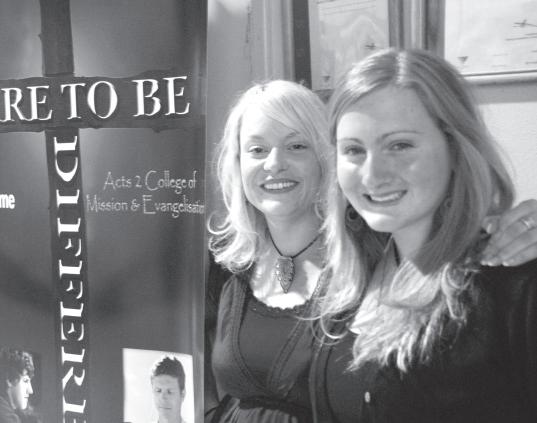
January 7 2009, The Record
PHOTO: ROBERT HIINI
Slowly but surely: The new Bunbury site retaining wall. PHOTO: BUNBURY DIOCESE
Page 11
COMMUNION OF SAINTS
Photos reveal Church’s esteem for marriage as path to holiness.
2008 was a big year for Catholics around the world, and for Lourdes devotees in particular. Aside from the mammoth World Youth Day 2008 that drew 400,000 pilgrims to Sydney, the year also saw the 150th anniversary of the apparitions of Mary, the Mother of God to St Bernadette of Soubirous, Pope Benedict XVI’s visit to France to commemorate the occasion and, perhaps most importantly, the beatification of Louis and Marie Zelie Guerin Martin, the parents. The remains of St Therese, known popularly the world over as ‘The Little Flower,’ visited Perth in 2001. The Record has emphasised often that sanctity is for everyone, single or married - not just those who enter religious life or discern a vocation to priesthood. The beatifications and canonisations in recent years by Pope John Paul II and Benedict XVI have strongly focused on lay models of holiness. The understanding of marriage and family life as a vocation in which holiness - closeness to God - is equally expected of its members has begun to spread more widely within the Church.
St Therese’s sainthood is one of simple devotion - an ordinary person doing ordinary things with extraordinary passion and devotion to God, showing the world a radical path to sainthood that does not involve changing the world in the Hollywood sense. Here, along with the story of her parents’ recent canonisation, we present a special edition, including a piece by Perth Carmelite Father Tadgh Tierney on the remarkable story of Hermann Cohen, a child musical prodigy who went on to become a Carmelite himself and had a profound influence, indirectly, on St Therese of Lisieux. Hermann arguably led a more glitzy life than Therese, but, again, it is the simple things that teach us how to take an active part in the Communion of Saints, to which we all belong.
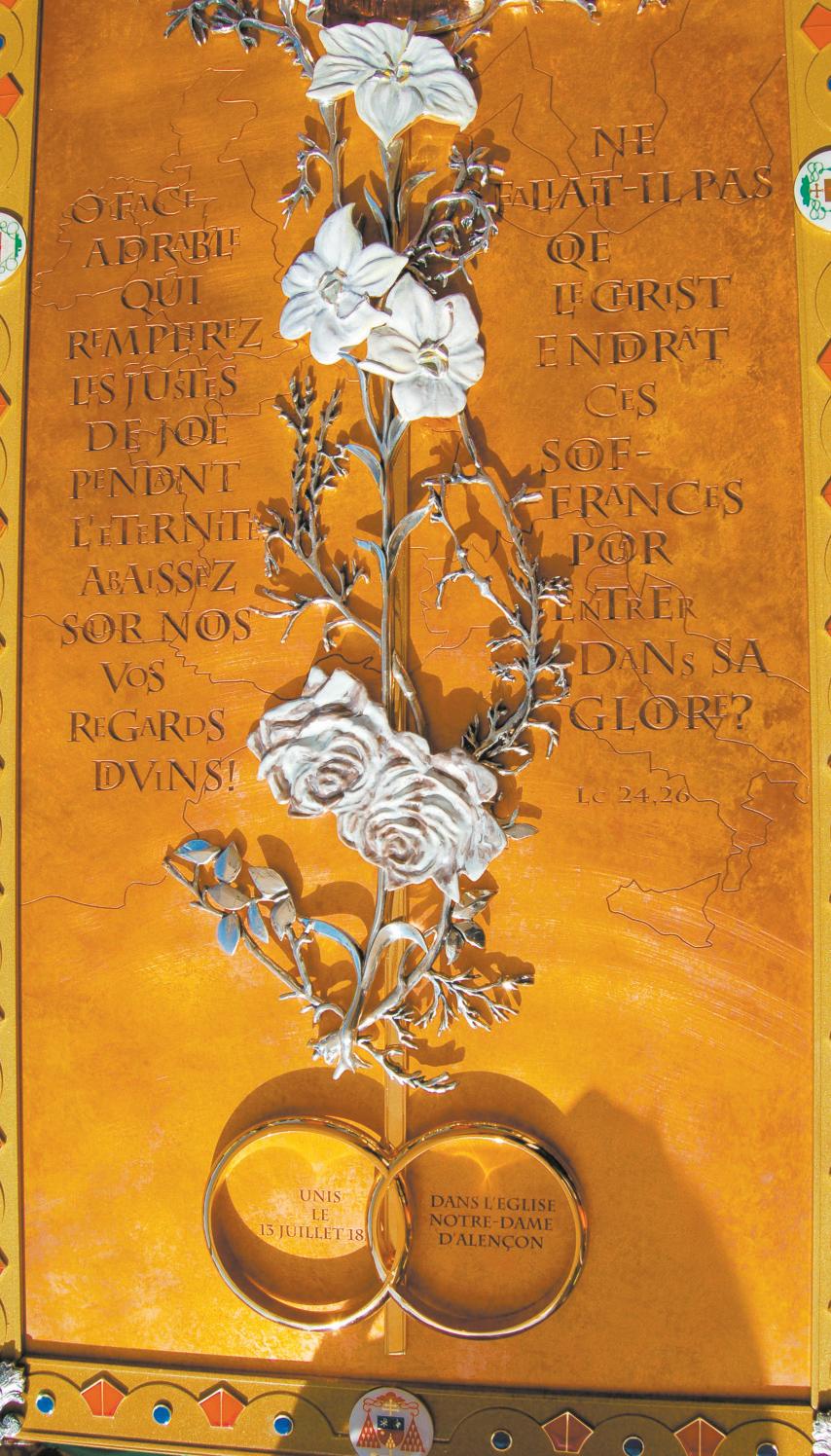
As
Therese’s
parents are beatified, our path is made clear
LISIEUX, France (CNS) - Cardinal Jose Saraiva Martins encouraged those present at the beatification of the parents of St Therese of Lisieux to thank God for their own parents.
“I have thought about my own father and mother, and I would like you also to think at this moment of your father and mother, so we will thank God together for having created us and made us Christians through the married love of our parents,” said Cardinal Saraiva Martins, former prefect of the Vatican’s Congregation for Saints’ Causes.
“Receiving life is a wonderful thing. But it is still more admirable for us that our parents should have led us to the Church, which alone is capable of forming Christians. No one can become a Christian by himself,” the cardinal said at the October 19 beatification Mass for Louis and Marie Zelie Guerin Martin in St Therese Basilica.
Among the approximately 15,000 people attending the Mass was a sixyear-old Italian Pietro Schillero.
When he was a month old, and after his parents and his parish prayed for the intercession of the Martins to cure his fatal lung condition; in 2003, the church recognized the cure as miraculous.
In a message read at the beatification Mass, Pope Benedict XVI said that the Martins had “proclaimed the Gospel” through their exemplary lives, passing on their “ardent faith” to their children.
The Pope said he hoped their example would be “a source of joy and hope for all parents and all families.”
Cardinal Saraiva Martins said St Therese, who died of hemoptysis, or bleeding of the lungs, at age 24, had described her parents as “more worthy of heaven than earth.”
The “secret of success” of the Martins’ Christian life, the cardinal said, had been their readiness to “walk humbly with God in seeking the advice of the Lord,” while also “placing all aspects of their lives in harmony with church teachings.”
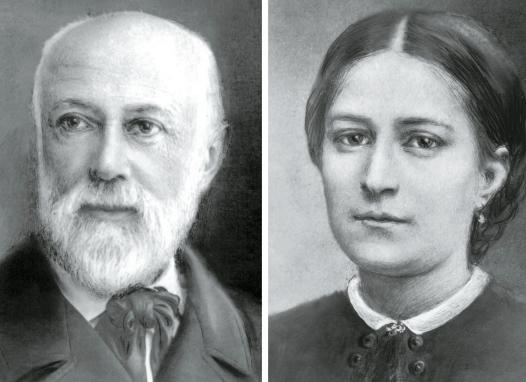
He added that the Martins were a “gift to parents,” widows and widowers, and those facing illness and death.
“Louis and Zelie are a gift for spouses of all ages, through the esteem, respect and harmony with which they loved for 19 years,” the cardinal said.
“They lived the promises of marriage, the faithfulness of engagement, the indissolubility of the bond, the fruitfulness of love, in happiness and in trials, in health and in sickness.”
Marie Zelie Guerin married Louis Martin, a watchmaker and jeweller, in 1858.
She died of cancer in 1877, at the age of 46, after giving birth to nine children.
Four of the Martins’ children died in infancy.
The five who survived all entered Religious life.
Page 12 January 7 2009, The Record
The glory of marriage reflects the glory of God: Wedding bans with the date July 13, 1858, are seen on one side of the reliquary of Louis and Marie Zelie Guerin Martin, inside St Therese Basilica in Lisieux, France. Inset: St Therese’s parents, whom Cardinal Jose Saraiva Martins recently beatified. PHOTOS: CNS
Musical prodigy, peer of Chopin, becomes ‘convert of the Eucharist’
In a tale of intrigue and remarkable characters, a life of a genius who influenced St Bernadette of Lourdes reaches through the centuries into our own existence in 2009
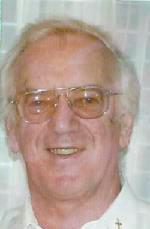
TThe story of Hermann Cohen (aka Father Augustine Mary of the Blessed Sacrament), child musical prodigy and Carmelite legend, provides us with the setting for one of the most gripping and eventful chapters in the nineteenth century. In his story we find life, high drama and great artists. Among these are his tutor, the legendary Hungarian composer Franz Liszt, Chopin, Victor Hugo, Lamennais, Saint Beave and the cigar smoking feminist, cross dresser and novelist Georges Sand, who often invited Hermann to play the piano for her as she composed her novels. Most of all, we find the quest for the God of love revealed in Jesus Christ. Hermann introduces us to the glitzy Paris scene over 150 years ago. On the case for The Record, Perth Carmelite Fr Tadgh Tierney OCD tells of how a genuis’ personal relationship with God transformed him into a spiritual heavyweight and influenced one of the greatest saints of the Church.
he shrine of Our Lady of Lourdes has perhaps been the most influential place of Marian pilgrimage in the history of the Church, with up to six million pilgrims visiting each year.
Last year marked the 150th anniversary of the apparitions at the grotto of Massabielle, where the Virgin Mary appeared to the young peasant girl Bernadette Soubirous who is now honoured as a saint.
Pope Benedict XVI visited France and Lourdes from September 12-15, 2008 to mark the occasion. As he left Lourdes, the Pope said in the farewell ceremony that he was “duty bound” to come to Lourdes to celebrate the 150th anniversary of the apparitions before the Grotto of Massabielle.
He said that he prayed for the Church, for France and for the world, and mentioned his visit to the parish church where Bernadette was baptised, the Cachot where she lived for two years and the Grotto.
I was glad in June this year to have visited those three places also with a small group of family and friends. It was my first visit back to Lourdes in over 20 years.
There is a strong Carmelite connection to the story of Bernadette. At present time there is a convent of Carmelite nuns in Lourdes, situated on rising ground directly opposite the Grotto across the river Gave, founded as early as 1876. There is an even older convent in Nevers, the city where her incorrupt body is venerated.
The most obvious connection lies in the fact that the eighteenth and final apparition to Bernadette took place on July 16, 1858, the Feast of Our Lady of Mt Carmel.
The Carmelite connection concerns Hermann Cohen, a child musical prodigy born in Hamburg, Germany in 1821 to Jewish parents and tutored in Paris by the legendary Hungarian composer Franz Liszt and travelled throughout Europe as a concert pianist.
Hermann converted to Catholicism in Paris in 1847 and soon after entered the Carmelite Order, and was to be known as Fr Augustine. The Latin Mass he composed in honour of St Teresa of Avila is still popular.
The story of Hermann provides us with the setting for one of the most gripping and eventful chapters in the nineteenth century.
In his story we find life, high drama and great artists. Among these, apart from Liszt are Chopin, Victor Hugo, Lamennais, Saint Beave and the cigar smoking feminist, cross dresser and novelist, Georges Sand, who often invited Hermann to play the piano for her as she composed her novels.
Most of all, we find the quest for the God of love revealed in Jesus Christ. Hermann introduces
us to the glitzy Paris scene over 150 years ago.
The Carmelites possess letters written by Cohen, some of them preserved at the Carmelite Priory in Kensington, London that he founded. His piano, a gift from the firm of Erard who made it, is also preserved in the Priory.
Many of the Carmelites, including myself, who have served in Australia have either been members of this community or have visited it in Church Street, Kensington. In 1856, amid his pioneering work in Lyons and Bagneres-deBigorres in the south of France, Hermann discovered a vast wooded solitude near the Pyrenees, and another about 20 kilometres from Lourdes at Tarasteix.
He intended setting it up as a traditional purely contemplative retreat like a Carthusian monastery.
When Hermann was surveying the area, a 12-year-old child near the hamlet of Bartres who was tending sheep in the hills overlooking Lourdes wished to make her First Communion and prevailed on her parents to allow her to go down to Lourdes to learn her Catechism in preparation. Hermann could not have foreseen that two years later, he would have the privilege of meeting the visionary Bernadette.
The apparitions at Lourdes 1858
While Hermann was still involved with the Carmelite houses at Bagneres and Lyon, ‘a beautiful lady’ appeared to Bernadette.
ily as she told us how the doctors had tried to make out that she was ill. We asked her yesterday if she noticed people around her when she saw the Virgin Mary. She replied that everything vanished and she saw and heard nothing, but the Blessed Virgin who spoke to her in the normal tone of voice that we ourselves were using.” Antoinette ended her letter: “I found Fr Augustine (Hermann) in good health and he preaches every Sunday.”
Hermann must have been very pleased to learn what was happening so near to the ‘desert house’ that he was in the process of founding in the Pyrenees.
On March 25, 1858, Mary appeared to Bernadette and said: “I
ful and sometimes sad, in tune with what Our Lady was telling her. We saw her greet Our Lady and then she began to talk to her, but no one could hear anything.”
Hermann returned to Lourdes from Tarasteix in May but he did not go immediately to the grotto, according to Antoinette.
She had described to him what she had witnessed. The authorities got worried and started to dismantle the grotto and prohibited people from drinking at the spring.
Finally they were ready to take the original advice of a commissary called Jacomet and close the grotto altogether.
On June 15 they set up barricades. The parish priest of Lourdes, Fr Peyramale, intervened on July 8, and when the bishop got involved on July 11 calm was restored.
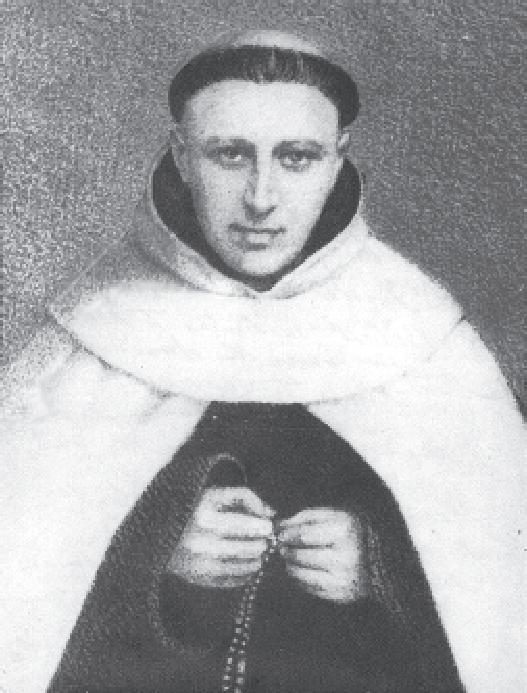
It appears that Hermann heard the news from one of his friends in March 1858. Antoinette Tardhival, a visitor at the nearby Carmel at Bagneres, entered for a while but returned to Lourdes where she was one of the first people interested in the apparitions. As early as March 9,1858 she mentioned the event that happened on February 18. On March 28, three days after the great apparition, Antoinette met Bernadette and was very impressed with the girl.
She writes: “Yesterday we talked a long time with the child. She told us everything, even about the interview she had to have with the doctors, and she laughed heart-
am the Immaculate Conception.” This was four years after the dogma of the Immaculate Conception of Mary had been proclaimed by Pope Pius IX on December 8,1854.
On April 7, Antoinette herself was present at one of Bernadette’s visions of Our Lady and left a precise, truthful, simple and convincing account:
“On arriving she fell on her knees beside the Gave just a few yards from the grotto and from there she was beginning to see the Blessed Virgin on the rose bush near the entrance.
“At that moment her ecstasy began. We noticed her smile, and then become serious and thought-
People started to pray at a distance from the grotto, but Bernadette must have suffered a lot with this turn of events. She did not attend the grotto and, while making her First Holy Communion at this time she had no apparition on that day.
Bernadette advised people not to go to the grotto because the barricades had been erected.
Final Apparition
On July 16, the Feast of Our Lady of Mount Carmel, the Holy Virgin appeared to Bernadette for the last time.
At sunset, Bernadette felt an impulse to go to the grotto in spite of the prohibitions of the authorities and respond to Our Lady’s invitation. She disguised herself and went with her aunt, Lucile Casterol, but not directly to the grotto. She crossed the Gave and remained on the right bank. She knelt down and began the Rosary.
In spite of the distance and the twilight, she had no difficulty in seeing Our Lady. She raised her hands in a gesture of joyful greeting, and in the semi-darkness several people noticed Bernadette smile. Someone lit a candle and people could see the joy on Bernadette’s face. In the light of the setting sun people started reciting the Rosary. After her ecstasy Bernadette was
questioned by Antoinette and she said: “I did not see the Gave or anything else. I only saw her. I have never seen anybody as beautiful as she is.” The apparition bowed towards the humble visionary as though in a farewell greeting and then disappeared. This last apparition on the Feast of Our Lady of Mount Carmel turned Bernadette’s thoughts towards the solitude of Carmel.
The aftermath of the apparitions
While Hermann Cohen was engrossed with the foundations at Tarasteix and Lyon in the summer of 1858, his friend, the great journalist Louis Veuillot, was on a visit to the health spa at Bagneres. He passed through Lourdes and spoke to the Abbe Peyramale who after initial hostility had been won over by Bernadette’s sincerity, as had three local bishops.
He called on Hermann and they were both disposed to believe in the apparitions. Both were afterwards to defend Lourdes - Veuillot in his frequent articles in ‘L’Univers’, and Hermann at the grotto itself by leading the first pilgrimage there.
So Hermann Cohen was the first Religious and priest to give public honour to God and Mary in Lourdes. Along with Abbe Rozies of Tarasteix, he led hundreds in front of the grotto, though it was still enclosed behind barricades and access was forbidden by the civil authorities, on September 20, 1858 - two months after the last apparition.
Bishop Laurence of Tarbes was at this time studying the dossier on the apparitions and was soon to give a favourable decision. The two priests were met by Abbe Peyramale who offered them hospitality and met the mayor asking permission for a visit to the grotto and it was reluctantly given - but only if they went before dawn. They celebrated Mass at 3am then went to Massabielle accompanied by one Dr Dozous who had drawn up an official report of several miracles which had taken place there the previous month.
That same day Hermann had a long talk with Bernadette Soubirous. Hermann’s friend Antoinette Tardhival had quickly won the confidence of the little girl and taught her to read at the end of the year 1858. Bernadette was not too keen on meeting priests as she had been questioned so much by them, but it would have been different in the case of this Carmelite (Hermann) who directed her teacher Antoinette, who had also entered a Carmelite convent. It’s not surprising then that she spent a long time talking to this priest.
Continued on Page 10
January 7 2009, The Record Page 13 COMMUNION OF SAINTS
The legend: Hermann Cohen OCD, the musical child prodigy trained by a Parisian master. Cohen chose monastic life over the considerable luxuries of the world that were at his disposal.
Carmelites push for canonisation of
After a year of celebration, Perth Carmelite recalls a man whose search for truth touches us all
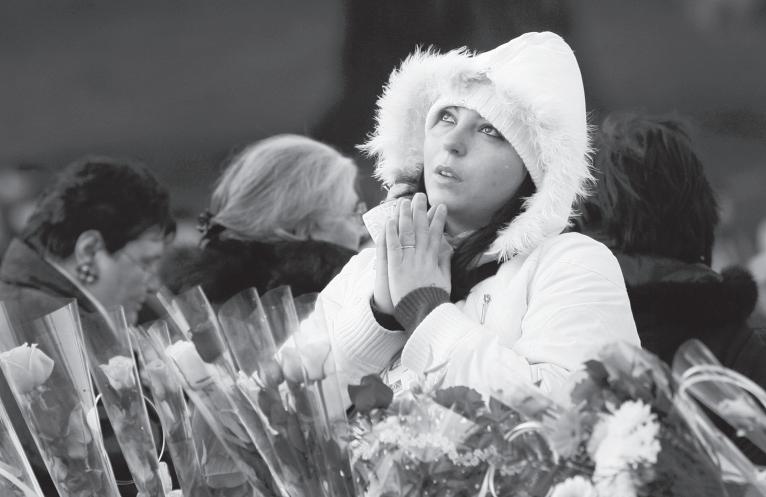
Continued from Page 9
In fact Bernadette’s aunt wrote in regard to her vocation: ‘From the beginning her attraction would have taken her to Carmel - she wanted to be a Carmelite.’ In the years immediately following these momentous events the phenomenon of Lourdes continued to grow with crowds visiting the shrine and bringing their sick to bathe in the spring at the grotto. Many healings were reported from the beginning. Meanwhile, Hermann continued his Carmelite apostolate in France being in great demand as a preacher.
Spiritual link, through the Eucharist, of St Therese of Lisieux and Hermann Cohen
Hermann’s period of residence in the `desert` of Tarasteix began in May 1868. With the permission of the Prior, he composed some motets during his time there entitled ‘Thabor‘. He had to do so without any instrumental resources, which were not available there. One of these motets on a Eucharistic theme was entitled A Little Flower at the door of the Tabernacle.
Between two cold barriers there grew a little plant Which brightened the tedium of the prisoner who cultivated it with love. And in exchange for his care he saw the humble plant Emit with all its energy the fragrance Of its flowers.
These hymns composed by Hermann were very popular in France for many years. Some years later in another part of France, Therese of Lisieux referred to herself as the Little Flower. Her autobiography begins with the words:
`The springtime story of a little white flower.’
Though she does not quote from the hymn she does refer to a picture card painted by her sister Pauline which she kept on this theme.
The idea of Jesus being a “prisoner of love” in the tabernacle would have appealed greatly to Therese’s romantic nature.
There are secular love songs with this title. One of her poems indeed speaks explicitly of this theme. Therese’s devotion to the Eucharist was typically Carmelite, a devotion Carmelites inherited from the one they called their Holy Mother, St Teresa of Avila.
Hermann himself had an extraordinary devotion to the Eucharist and referred to himself as a “convert of the Eucharist”.
Hermann Cohen was instrumental in founding the Movement for Nocturnal Adoration of the Eucharist in the Church of Our Lady of Victories in Paris and this movement became widespread in France. This church also figures in the life of St Therese.
In her early illness her father requested Masses there and Therese would later return to the church on her way back from Rome to thank Our Lady for her miraculous cure. In the reordered sanctuary of what is now a basilica she shares a panel on the main altar with Hermann and others.
In his work of adoration, Hermann enlisted the support of likeminded people like Cyrille de Bengue, who organised Eucharistic devotion in a little chapel on the hill of Montmartre - the highest point in Paris – on September 6, 1878. This was the period when the great Basilica known as SacreCoeur was being built on this site.
Therese would later send her gold bracelet to be used in the fashioning of the tabernacle of the new basilica.
She would have inherited her love of the Eucharist from her father Louis Martin who himself attended adoration of the Eucharist whenever possible.
The Martin family, in fact, had looked to Lourdes for healing when Louis` wife Zelie fell ill. Her daughters Marie and Pauline took their mother to Lourdes in the last

months of her life. Their prayers for a cure were not answered. Zelie reflected on Our Lady’s words to Bernadette, inscribed on the balustrade of the Basilica, `I do not promise to make you happy in this world but in the next’.
Indeed, the journey aggravated her illness, especially after she sustained a nasty fall. Contrary to the present usage of a quick dip in the baths, Zelie on her fourth visit to the baths was immersed in the icy water for 15 minutes. She was disappointed not to meet Abbe Peyramale who was away but she did speak to a woman who had witnessed one of Bernadette’s visions.
First healings at the grotto of Lourdes
On October 1, 1868 Hermann’s nephew George received a letter from Tarasteix. Hermann mentioned the fact that he was having trouble with his eyes, although otherwise everything was fine.
This was a bad omen for life in the desert with the onset of winter and indeed his health deteriorated. At this turn of events, Hermann looked with confidence to Our Lady of Lourdes.
For nearly 10 years now healings were being reported from the grotto. So Hermann set out as a pilgrim once more for the grotto. Dr Boissarie, the medical person in charge of examining alleged healings at the Grotto, concludes his report on this case: “We are not accustomed to cures as complete and instantaneous as this.
“They are quite outside the rules and traditions of our art. For my own part I don’t know how to contest or interpret this happening.”
(Annals of Lourdes, Nov 1868)
Vatican I
Those of us who have lived through Vatican II will resonate with the events leading up to Vatican I. The Council set out to confront what it saw as modern errors.
Continued to Page 11
‘St Bernadette’s story is of selfless service’ Hindu film makers call St Berndadette’s message relevant today
PANAJI, India (CNS) - A recent film on St Bernadette Soubirous shows how ordinary people can make a difference, said the film’s producer and director, both Hindus from India.
VR Gopinath, who directed “Our Lady of Lourdes,” said he made the movie because the saint’s modest way of living, dedication to her ideals and faithfulness to her call are “important messages to the present society.”
St Bernadette first saw Mary in 1858 in Lourdes, in southern France.

The movie, which premiered on December 21, 2008 in Panaji, capital of coastal Goa state, was shot in the southern state of Kerala, reported the Asian church news agency UCA News.
Ajna Noiseux, a 14-year-old girl of French origin living in Kerala, plays St Bernadette.
“The movie shows that an ordinary person, without money, can make a difference in the world,” said Kamalakar Rao, the producer.
“St Bernadette’s story is of selfless service.”
Rao told UCA News that personal visits to Lourdes in 2006 and 2007, and the encouragement of Archbishop Joji Marampudi of Hyderabad helped him complete the film.
Rao lives in Hyderabad, capital of Andhra Pradesh state, about 460 miles northeast of Panaji.
At the 2008 French film festival on the occasion of the 150th anniversary of Mary’s appearances to St Bernadette, the film attracted rave reviews from the French media, particularly because it was made “by a Hindu,” Rao told UCA News.
In 2007, the movie won an honourable mention at the Accolade Film Awards in San Diego, and the audience award for best feature film at the Pause and Play International Film Festival in Sharjah, United Arab Emirates. Made in English, the movie also has been dubbed in French, Kannada, Malayalam and Tamil.
Rao said the movie has “universal appeal,” despite family and friends having criticised him for not making a commercially viable movie, while others argued he should have made a movie on Hindu spiritualism.
Though St Bernadette lived in poverty, she was born into a family with comfortable means. After her family fell on hard times, they lived in a former town jail. St Bernadette shunned the attention that followed the Marian visions.
She sought seclusion and entered religious life with the Sisters of Charity and Christian Instruction at Nevers, France.
She remained hidden from the world and died in 1879 of tuberculosis of the bone.
Page 14 January 7 2009, The Record COMMUNION OF SAINTS
VR Gopinath, Our Lady of Lourdes director
Example of devotion: A pilgrim prays at the foot of a statue of Mary at the sanctuary in Lourdes, France, on February 10, 2008, the eve of the 150th anniversary of Mary’s first appearance to St. Bernadette. PHOTO: CNS/NANCY WIECHEC
prodigy who fought against division
Continued from Page 10
It is best known for proclaiming the doctrine of Papal Infallibility, which was very divisive at the time. In fact the great Cardinal Henry Newman, whose cause for beatification has now been introduced, thought the definition `inopportune’.
In the end it did lead to groups of Catholics seceding from the Church to form what were called the `Old Catholics’, much like the French Archbishop Lefebvre after Vatican II.
Indeed, Pope Pius IX proclaimed the dogma of the Immaculate Conception in 1854, four years before the apparitions at Lourdes. Hermann wrote to his nephew George in 1869: ‘Could I ask you to cut out all the passages dealing with the Council in ‘L’Univers` and send them to me? It is important for me to be in touch with a movement like that.’
Hermann had no sympathy with those who were ‘stirring things up’ and he remarked: ‘The Gallicans cut a sad figure just now and our Holy Father preaches humility on every occasion. May we obtain, and always possess this lovely and precious quality.’
Mention of the `Gallicans’ introduces us to another figure whose story intersects with that of Therese and also Bernadette but in a more negative way. Gallicanism was the adopted position of those who favoured a kind of national French church as opposed to the ‘Ultramontanes’ who represented strict adherence to the view that the Supreme Pontiff was in fact supreme.
“For
us Carmelites, Hermann’s
holiness is beyond doubt and his canonisation highly desirable”
-Fr Joseph Of St Marie OCD
Gallicans held that an ecumenical council was above the Pope. One of the staunchest promoters of the gallican position at the time was a Carmelite priest named Hyacinthe Loyson, who was only six years younger than Hermann yet their paths may not have crossed very often.
Loyson did not join the Carmelites until 1860 and from 1863-1865 Cohen was involved in the restoration of the Carmelites to London.
Loyson, who first joined the Sulpicians and later the Dominicans, was a charismatic preacher – perhaps the most famous in France in his time.
He sat on the investigating committee on Bernadette Soubirous, interrogated her early on and unlike Hermann he opposed her

Chronicle of Lourdes
The effects of Mary’s appearance at Lourdes have been reconciliation, healing and devotion to the Immaculate Conception, a dogma not known to the young visionary Bernadette.
Pope Pius IX declares the dogma of the Immaculate Conception, that Mary was born without original sin.
A woman holding a rosary appears 18 times to 14-year-old Bernadette Soubirous at the Massabielle grotto. In the visions, Mary asks that a chapel be built at the grotto and identifies herself as the Immaculate Conception. She directs Bernadette to drink from a spring, which is later associated with healings.


The local bishop proclaims the visions authentic and the first healings connected with Lourdes are recognized as miraculous.
Bernadette leaves Lourdes and enters the Sisters of Charity and Christian Instruction in Nevers. Construction begins on the Basilica of the Immaculate Conception.
Bernadette dies in Nevers April 16.
Bernadette is canonized by Pope Pius XI Dec. 8.
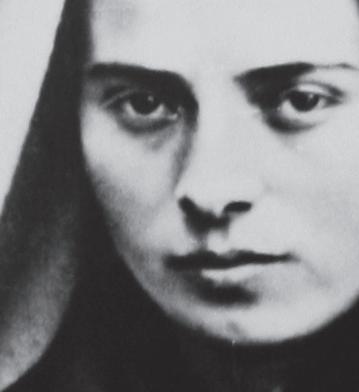
Sources: HarperCollins Encyclopedia of Catholicism and www.lourdes-france.org
strongly. Loyson, a pacifist, was opposed to the Franco-Prussian war, but more importantly from a theological point of view he opposed the impending definition of Papal Infallibility. When he was attacked by Bishop Dupanloup of his native diocese of Orleans who urged him to repent he retorted: ‘What you call a great fault committed, I call a great duty accomplished’.
Hyacinthe Loyson left the Order (where he had been Superior of the Paris Carmel) and the Roman Catholic Church just before Vatican 1.He entered a civil marriage with an American lady named Emily Butterfield the widow of a man called Merriman.
He founded a `Catholic Gallican Church` in Paris in 1879 complete with liturgy. One of Loyson’s staunchest opponents was the journalist Louis Veuillot who was a friend of Hermann Cohen. It is highly likely that he was referring to Loyson when he mentioned the `Gallicans cutting a sad figure`.
However, Hermann wrote him a heartfelt letter later begging him to return to the Church and the Order. Vatican 1 was adjourned abruptly in 1870 because of
the outbreak of war between France and Prussia.
Moving on to the year 1897, we find the name Hyacinthe Loyson cropping up in St Therese’s story. It is well known among Carmelites that she offered her last Holy Communion for the conversion of this renegade priest on August 19. Therese had made Loyson’s salvation a priority in her prayer for most of her brief Religious life. She made him the subject of a letter to her sister Celine as early as July 8, 1891.
His preaching in Normandy at this time was reported in the press and Therese writes: ‘The unfortunate prodigal went to Coutances where he started over again the conferences given at Caen. It appears he intends to travel throughout France in this way… His wife follows him everywhere.’ She then urges Celine to renewed prayers for his conversion.
In January 1911, the year before he died, the Carmel at Lisieux sent Loyson a copy of the `Story of a Soul’. Part of his reply stated: `I was touched, very much touched, by many of the things I read in this book’.
Lest we be too quick to jump to judgement ourselves we could do well to remember this line from one of Loyson`s letters to Celine: ‘I have been mistaken more than once in my life, but I am convinced that what God condemns in man is not error when this is sincere, but selfishness, pride and hatred’. Celine (Sr Genevieve) pursued a correspondence with the former Carmelite for the last year of his life, sending him articles on the progress of Therese’s Cause.
He died a pious death on February 9, 1912. (Letters of St Therese of Lisieux, Volume 11, translated by John Clarke ocd, ICS Publications, Washington DC).
Hermann Cohen died at Spandau prison, near Berlin on 20 January 1871. He was just 49 years of age. Spandau was later famous as the prison for Nazi war criminals including Rudolf Hess who died there.
Hermann had contracted smallpox while ministering to the French prisoners of war who were held in the prison. It was a heroic end to a lifetime of pioneering work on behalf of the Carmelite Order.
I can entirely agree the comments of a French Carmelite who wrote: ‘Let us endorse the wish to see Fr Hermann’s beatification introduced. For us (Carmelites), his holiness is beyond doubt and his canonisation highly desirable at the present time’. (Fr Joseph Of St Marie ocd, Pensee Catholique 1982).
Unfortunately political considerations also affect the Church’s procedures and after the unprecedented Jewish objections to the beatification of Edith Stein, it is unlikely that Hermann’s cause will be fast-tracked. This is a great pity as he is such a shining model for the modern age. He confessed in later life that he himself turned from a life of pleasure and gambling in Paris where he was a feted celebrity, to find true happiness in Christ.
In this year of the 150th anniversary of the apparitions at the Grotto in Lourdes I have surveyed some details in the story of the humble visionary, Bernadette and the direct or indirect influence of some Carmelites on that story for about the first fifty years.
I have suggested that even Therese of Lisieux could count as one of those indirect influences. Her spirituality in regard to the Eucharist and the Little Flower theme echoes that of Hermann Cohen, the confidant of Bernadette. Members of her family went on pilgrimage to Lourdes on two occasions. Her subsequent zeal for the spiritual welfare of Hyacinthe Loyson, sometime colleague of Hermann Cohen in the Carmelite Order in France links together the two greatest French female saints of modern times.
The story itself concerns the Church in France of the nineteenth century but it has had much wider repercussions in the church universal.
A CD of the Latin Mass composed by Hermann Cohen ocd, in honour of St Teresa of Avila, is available at Infant Jesus Church, Morley. The Choir of Our Lady of Mt Carmel Church, Kensington that was founded by Cohen recorded it.
Roses and thorns: Pope Benedict XVI lays achievements, concerns at the eet of Mary.
■ By Cindy Wooden
ROME (CNS) - Laying a basket of white roses at the foot of a statue of Mary, Pope Benedict XVI said Catholics can lay everything at the feet of their heavenly mother.
“Symbolically, these roses can express everything beautiful and good that we have done during the year,” the Pope said during his visit to the centre of Rome on December 8 for the traditional ceremony alongside the statue of the Immaculate Conception near the Spanish Steps.
“But, as the saying goes, ‘Every rose has its thorn,’ and the stems of these stupendous white roses are not lacking thorns, which represent the difficulties, sufferings and ills that have marked and still mark the lives of people and of our community,” the Pope
said. Bundled up against a crisp chill, thousands of Romans and tourists jammed the square around the Spanish Steps to see the Pope and pray with him.
Offering the roses to Mary, the Pope also entrusted to her his special prayers for children, particularly those who are sick, disadvantaged or suffering because of family problems.
He prayed for elderly people living alone, for the sick, for immigrants struggling to build a new life in a new country, for families who barely make ends meet and especially for people who recently have lost their jobs.
“Mary, teach us to be in solidarity with those who are in difficulty, to bridge the increasingly vast social disparities; help us cultivate a livelier sense of the common good,” Pope Benedict prayed.
The Pope said the beauty of Mary, conceived without sin, “assures us that the victory of love is possible; in fact, it is certain”.
“It assures us that grace is stronger than sin and therefore it is possible to be redeemed from any form of slavery.”
The example of Mary’s life helps Christians believe in goodness, graciousness, service,
nonviolence and the power of truth, he said. “She encourages us to remain wakeful, not to give in to the temptation of easy escapes, but to face reality with all its problems with courage and responsibility,” Pope Benedict said.
He added that, looking up at Mary, Christians experience the same sensation a child has when looking up at his or her mother “and, seeing her smile, forgets every fear and pain.”
“Turning our gaze to Mary, we recognise in her the smile of God, the immaculate reflection of divine light, and we find new hope even in the midst of the problems and dramas of our world,” Pope Benedict said.
He said the feast of the Immaculate Conception reminds Catholics of two basic church teachings: the existence of original sin and the fact that, through Christ, God has redeemed those who believe.
The Pope also noted that December 8 marked the end of the yearlong celebrations of the 150th anniversary of the apparitions of Our Lady of Lourdes, who identified herself to St Bernadette Soubirous as “the Immaculate Conception.”

January 7 2009, The Record Page 15 COMMUNION OF SAINTS
1854 1858 1862 1866 1879 1933
©2008 CNS s e
Mary assures us that the victory of love is possible
Love: Pope Benedict XVI smiles as he celebrates a Mass for the sick at the Marian sanctuary of Lourdes, France on September 15, 2008. CNS
Summer kids films hit the mark

stills and games for kids.
The Tale of Despereaux
■ By John Mulderig
NEW YORK (CNS) - Those who fear that chivalry is dead will be reassured by The Tale of Despereaux (Universal/Relativity), a charming animated adventure about a mouse (voice of Matthew Broderick) with outsized ears, a strict code of honour and a taste for derring-do. Far from winning him the admiration of his peers, however, Despereaux’s knightly aspirations set him apart in the miniature society of Mouseworld, where matches serve as streetlamps and an overturned dresser becomes a multiple-family dwelling.
Fearful conformity reigns in Mouseworld, and Despereaux’s refusal to toe the line by learning to cower worries his parents (voices of William H. Macy and Frances Conroy) and his principal (voice of Richard Jenkins).
Mouseworld is nestled within the walls of the royal castle of Dor, a once-happy human kingdom plunged into mourning by the untimely death of its queen. As her widowed father continually broods over his loss, playing melancholy tunes on his lute, Dor’s Princess Pea (voice of Emma Watson) longs for the return of sunnier times. With his native pluck reinforced by his reading of a courtly romance in the castle library - the film sends a
strong message about the enjoyment to be derived from books - Despereaux sallies forth and discovers the forlorn princess, whom he immediately pledges to assist.
This flagrant violation of rodent timidity results in Despereaux’s banishment to the dark and squalid tunnel known as Ratworld.
There, in the only scene that might frighten very young viewers, he’s pitted against a fearsome cat in the rats’ version of Roman gladiatorial games.
But Roscuro (voice of Dustin Hoffman), a globe-trotting rat with gourmet tastes and a fondness for light that make him, like Despereaux, an outsider, intervenes and takes the vulnerable mouse - whose adventurous spirit he shares - under his protection.
Though somewhat overloaded with multiple plot lines - Roscuro was unintentionally involved in the queen’s death and there’s a further series of complications involving a downtrodden farm girl named Miggery Sow (voice of Tracey Ullman) who yearns to be a princess - The Tale of Despereaux is delightfully innocent and idealistic, with objectionable material of any kind entirely absent.
Co-directors Sam Fell and Rob Stevenhagen’s painterly adaptation of Kate DiCamillo’s 2003 best-selling, Newbery Medal-winning children’s novel celebrates its hero’s courageous openness while it also charts Roscuro’s discovery of the power of forgiveness.
Spiritually sound and aesthetically accomplished, The Tale of Despereaux can be recommended for all this school holidays.
Madagascar: Escape 2 Africa
■ By Fr Peter Malone MSC
Not a fan of the original Madagascar (too many in-jokes for the voice stars undermining the cartoon capers), I approached this sequel with some trepidation. However, I found it far better and funnier (and less ‘in’) than the first film.
Maybe, there is a touch more of the human this time (and some echoes of The Lion King) where we are shown Alex, the King of New York in zoo showbiz, as a cub more intent on dancing than fighting, where we see his father confronting his rival for leader of the pride of lions, where we see the mischievous Alex caught by hunters and his imprisoning box floating to New York and the life that we saw in the first film with his friends, Marty, Gloria and Melman.
This time they want to go to Connecticut but land up in Madagascar, presumably, and get a lift back to New York in a ramshackle plane piloted by the penguins which then has an amusing crash landing in deepest Africa – where Alex originally came from. What follows is Alex finding his roots (and confronting his father’s rival after he fails the initiation rite), is Gloria falling in love with a very large hippo to Melman’s dismay, is Melman offering himself as a sacrifice to the gods of the volcano to get water back, is Marty finding that all zebras look the same even though each is unique. King Julien is on hand again, just as manic, and leading the ceremony for the sacrifice. There are some humans too, especially a determined ‘little old lady’ intent on controlling the big ‘kitties’.
Lots of zany action, some funny musical allusions, some adventure and danger – and the entertaining voices of Ben Stiller as Alex, Chris Rock doing his shtick as Marty, David Schwimmer mournful as Melman, Jada Pinkett Smith romantically hippo as Gloria and Sacha Baron Cohen on the loose as King Julien.
A lot of nonsense, of course, but this time engagingly so.

Pitt the younger... and the older commands screen
■ By Harry Forbes
NEW YORK (CNS) - “We’re meant to lose the people we love; how else are we to know how important they are to us?” a character asks rhetorically in The Curious Case of Benjamin Button (Paramount), an overly long but highly imaginative expansion (and updating) of a 1922 F Scott Fitzgerald short story. And in the story of a man born old who grows younger in appearance as he ages, death is always part of the fabric of life.
The story opens in New Orleans, where the titular character, played most impressively throughout by Brad Pitt narrating with a languorous Southern accent, is born with the face of an old man, as his mother dies in childbirth.
His crazed-with-grief father, Thomas Button (Jason Flemyng), races out of their house, and deposits the baby on the steps of a retirement home.
Queenie (Taraji P. Henson), the black attendant there, takes pity on the child, and announces to her skeptical male companion (Mahershalalhashbaz Ali) that she will raise the white child, and so she lovingly does. In this environment, death is a natural and frequent occurrence that everyone takes in stride.
Young Benjamin, with his wizened face and bald pate, hobbles around like an arthritic oldster, and under Queenie’s overly protective care is rarely allowed to venture far from the home.
One of the elderly residents introduces him to her granddaughter Daisy (Elle Fanning), who seems to glean Benjamin’s youthful spirit, and a bond develops.
As Benjamin ages, he starts to look marginally younger, though is still an elderly man. He joins the staff of a tugboat run by rough-hewn Captain Mike (Jared Harris), who introduces Benjamin to his first sexual experience at a brothel. (Except for this very brief scene, overt sexual elements are minimal.)
Later, and now looking like the Brad Pitt we know, he has his first love affair with Elizabeth Abbott (Tilda Swinton), the wife of a diplomat in the Russian seaport of Murmansk.
When he returns to New Orleans, he meets the grown Daisy (Cate Blanchett), an aspiring ballet dancer. Though she boldly suggests an affair, he declines, and they do not connect romantically until much later in the story (when their respective ages are better matched).
When they do, the romance is bittersweet, knowing their time together will be all too brief as they age in opposite directions.
Under David Fincher’s direction, the leads deliver very fine performances and the outstanding digital effects make the forward and backward aging remarkably believable. Blanchett is first seen as a dying old woman, having her daughter (Julia Ormond) read from Benjamin’s diary.
Eric Roth’s clever script (with Robin Swicord) more than a little resembles his earlier “Forrest Gump.” The rich production design and atmospheric cinematography are further pluses.
This most unusual and often melancholy story - presenting as it does a unique, often profound perspective on the transience of human life and how we deal with the people we meet and the things we experience including death - makes thought-provoking and ultimately poignant viewing.
The film contains implied nonmarital situations including nongraphic encounters, some rough language and brief profanity, mild innuendo, out-of-wedlock pregnancy, adultery, brief rear nudity and wartime violence.

Page 16 January 7 2009, The Record REVIEWS
Stunning animation: A wide-eyed Despereaux exhibits the extent to which 3D animation has developed. The studio offers the same cutting edge approach on the film’s official website - www.thetaleofdespereauxmovie.com - with more
PHOTO: CNS/UNIVERSAL STUDIOS
The Curious Case of Benjamin Button
Transformation: Brad Pitt in one of his best performances to date as aged man who progresses to grow into an infant.
Pope calls for new economic model
Financial crisis calls for new economic model, solidarity, Pope says.
■ By Cindy Wooden
VATICAN CITY (CNS) - The current financial crisis should be seen as a challenge to find new economic models that promote honesty, development and concern for the environment, Pope Benedict XVI said.
“We need to try to establish a ‘virtuous circle’” of living simply and fighting poverty, the Pope said on January 1 as he celebrated Mass for the feast of Mary Mother of God and World Peace Day.
During the Mass in St Peter’s Basilica and reciting the Angelus afterward with people gathered in St Peter’s Square, Pope Benedict focused on the 2009 World Peace Day theme, “Fighting Poverty to Build Peace.”
But he also called for an end to the “massive violence” in the Gaza Strip and offered special prayers for “the small, but fervent parish in Gaza.”
“We place at the feet of Mary our concerns for the present and our fears for the future, but also our well-founded hope that with the wise and farsighted contributions of everyone it will not be impossible to listen to one another, meet together and give a concrete response to the widespread aspiration to live in peace, security and dignity,” the Pope said.
Pope Benedict prayed for peace throughout the Middle East, accepted the offertory gifts from a group of children from Lebanon and listened as a prayer was read in Arabic asking God to inspire people to combat poverty as a contribution to peacemaking.
In his homily, the Pope said he imagines Mary often asked herself: “Why did Jesus want to be born of a simple and humble young woman like me? And why did he want to come into the world in a stall and have those Bethlehem shepherds as his first visitors?”
After Jesus’ death, he said, Mary understood that “God became poor for us, to enrich us with his poverty full of love, to exhort us to stop the insatiable greed that gives rise to fighting and division, to invite us to moderate our mania to possess and, in that way, to make us open to sharing and welcoming one another.”
Poverty chosen as a way of life to demonstrate the primacy of God and of love for others is not the same thing as the kind of poverty experienced by millions of the world’s people, he said.
“There is a kind of poverty, an indigence, that God does not want and that must be fought,” he said, adding that it is “a poverty that impedes people and families from living according to their dignity, a poverty that offends justice and equality and, as such, threatens peaceful coexistence.”
While AIDS and other diseases spread, while children live without basic necessities and millions of families struggle to find food, the Pope said, “the unacceptable arms race” continues.
“On one hand, there are celebrations for the Universal Declaration of Human Rights, while on the other hand there is an increase in military spending in violation of the United Nations’ charter, which commits nations to reduce them to a minimum,” he said.
Solidarity, not a weapons system, is the key to protecting human dignity and ensuring peace, the Pope said.
Turning to the current global economic crisis, the Pope asked: “Are we ready to read it, in all its complexity, as a challenge for the future and not just as an emergency needing short-term responses? Are we ready to conduct together a profound revision of the dominant model of development in order to correct it in a concerted and farsighted way? Even more than the immediate financial difficulties, the ecological state of the planet and, especially, the cultural and moral crisis whose symptoms have long been evident in many parts of the world require it,” he said.
The solution, Pope Benedict said, must be based on adopting a moderate lifestyle and making a commitment to living in solidarity with those whose dignity is threatened by poverty and by war.
Addressing pilgrims in St Peter’s Square after the Mass and greeting hundreds of people who had participated in a march for peace sponsored by the Rome-based Sant’Egidio Community, the Pope said Christians are called to live with hope for the future.
“It is not a matter of trusting in better luck or in modern manoeuvres of the market and of finance, but of each one of us making a commitment to being just a bit better and more responsible and to counting on the goodness of the Lord,” he said.
Catholic med students form groups to mesh faith, careers
NASHVILLE, Tenn. (CNS) - Catholic students at Vanderbilt University Medical School in Nashville have formed new student organisations to promote the intertwining of their values and their future careers. Both organisations - the Society of Sts Cosmas and Damian, a group for Catholic medical students, and Leaders in the Fight for Every Patient, or LIFE, a nondenominational pro-life group founded by a Catholic student - asked Dr Wes Ely to serve as their faculty adviser. Ely, a Catholic and parishioner at the Cathedral of the Incarnation, had prayed for the past 10 years to find a way to bridge a relationship between God and medicine at Vanderbilt, he said.
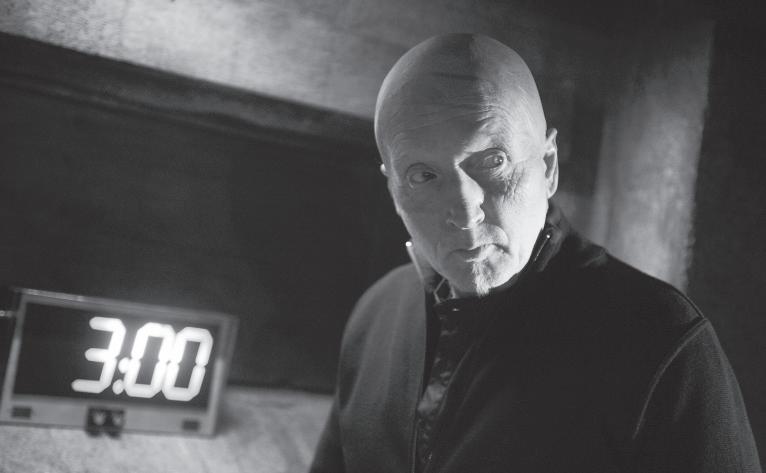
Scary
violence that’s so gory and horrific that it’s practically pornographic, and often involves torturing women.
New US study shows exposure to violent media can beget violent behaviour
Just what parents have always suspected for years.
WASHINGTON (CNS) - A new study, to be published in February, shows that exposure to violent media makes adolescents more likely to be violent or aggressive themselves.
Even when other factors that can contribute to violent behaviour are present, according to the study, the tendency for young people to become violent or aggressive as the result of watching violent media still exists. Research for the study, funded by the federal Centres for Disease Control and Prevention, started in 2004. The study, titled “The Role of Violent Media Preference in Cumulative Developmental Risk for Violence and General Aggression,” is just the first such study to be generated from the CDC grant.
“Even in conjunction with other factors, our research shows that media violence does enhance violent behaviour,” said Rutgers University assistant psychology professor Paul Boxer, one of five researchers who contributed to the study and the study’s lead author. “On average, adolescents who were not exposed to violent media are not as prone to violent behaviour.”
What’s the difference between violent behaviour and aggressive behaviour? Pushing and shoving, stealing or not obeying the teacher is classified as aggressive behaviour, according to Boxer. Punching someone in the face or threatening them with a knife or a gun would be recorded as violent behaviour, he added. The research team inter-
viewed 820 Michigan adolescents - 430 of them were high school students from rural, suburban and urban communities, and 390 were juvenile delinquents in county and state facilities.
The number of male adolescents and female adolescents were about even; the split between minority and non-minority youths also was about even. Parents or guardians of 720 of the youths also were interviewed, as were teachers or school staff for 717 of them.
Each subject was asked to name his or her favourite TV shows, movies and video/computer games - as a child and as a teen - and each was questioned about whether he or she had engaged in specific antisocial behaviours, such as throwing rocks or using a weapon. The interviewers also looked at other factors that exposed them to violent or aggressive behaviour.
“With 800 kids, there’s a lot of variation about what their preferences are” as far as programs and games, Boxer told CNS in a telephone interview from his office in Newark, New Jersey. “There were over a thousand different television shows, 500 to 800 video games and roughly the same number of movies” named by the young respondents.
“We take all the titles and have our team code them,” Boxer added. There were two dozen coders on the team. For their coding of the movies, TV shows and games they depended on assessments made by the National Institute on Media and the Family, Kids Corps and Web sites with panels of experts.
A zero “meant no violencesomething like ‘The Cosby Show,’ for example,” Boxer said. “A ‘4’ is
“During the past year, this was accomplished through the medical students, who contacted me about forming these two organisations,” he said.
“I am so proud of these students for taking this on. They put their faith first regardless of traditional medical opinion.”
Mariu Carlo is the founder of the Society of Sts Cosmas and Damian. “Before the group was officially started in the spring of 2007, there were already five to eight students in my class that would go to Mass together, have meals together, and have random discussions of certain medical ethics issues or challenges and frustrations we were having with medical school,” she said.
“Five of us started planning to begin an official Catholic medical student group because we wanted to integrate spiritual growth with professional growth,” Carlo added. “We sought to do this by organising service activities and lectures at school, having weekly prayer group meetings, and
a visually violent show - ‘24,’ for example.” Even the young people detained by law enforcementwho, one would think, would have ample motive and opportunity to lie - were truthful when answering questions posed by the researchers, according to Boxer.
“Kids are pretty generally honest in those settings,” he said. “Here they can feel comfortable being honest. We make sure the kids are putting their names on anything that they’re working with,” including self-guided interviews conducted on laptop computers.
Boxer had a message for parents. He would really like them to understand, “not just from my study but from the many studies that have been done out there (and) literature on violent media exposure, (that) kids do not need to be exposed to any violent media. And as a parent myself, I take this very seriously,” he said.
“At a young age, there’s no reason why kids younger than 7 or 8 need to be exposed to any kind of violent media,” he said. “Parents need to explain to their kids that this (violence) isn’t real, this is fake. This is what happens in real life: If you have a problem in real life, blowing up a house is not the solution.” The full 12-page study will be published in the Journal of Youth and Adolescence
When you watch TV, what do you see? What are your likes or dislikes? What are your concerns and criticisms? Be as general or as specific as you wish. Send them to The Record, PO Box 75 Leederville WA 6902 or cathrec@iinet.net.au.
fostering more community among all Catholic medical students.” Brian Cruz, the society’s president, said: “I wanted to be involved (in this organisation) to find a community of Catholics with whom I could pray and worship, and also as a means of viewing my medical education through the lens of my faith and integrating Catholic values into my profession.” The organisation meets regularly to go to Mass together on Sundays. Members also coordinate events on special occasions, such as a potluck after Mass on the feast day of Sts Cosmas and Damian, twin physicians who were martyred and are the patron saints of physicians, surgeons and pharmacists, among others.
Jessica Adams, a Catholic who founded LIFE in May 2008, said the organisation was established to further awareness and involvement on campus regarding pro-life issues in medicine and society, based upon the principle that physicians have the responsibility to preserve human life at all developmental stages.
January 7 2009, The Record Page 17 WORLD
stuff: Tobin Bell stars in a scene from the movie Saw V. The US bishops conference’s Office for Film and Broadcasting classification is O - morally offensive. The Saw movie franchise started off violent but has now evolved into what even secular reviewers call “Gorno” - an abbreviation for
PHOTO: CNS/LIONSGATE
PANORAMA
Panorama entries must be in by 12pm Monday. Contributions may be emailed to administration@therecord.com.au, faxed to 9227 7087, or mailed to PO Box 75, Leederville, WA 6902. Submissions over 55 words will be edited. Inclusion is limited to 4 weeks. Events charging over $10 will be a put into classifieds and charged accordingly. The Record reserves the right to decline or modify any advertisment.
Saturday January 10
ST PADRE PIO DAY OF PRAYER
8.30am at St Joachim Church, 122 Shepperton Road, Victoria Park; St Padre Pio DVD, 10am Exposition Blessed Sacrament, Rosary, Divine Mercy, silent Adoration and Benediction. 11am Holy Mass, celebrant Fr Tiziano Bogoni, St Padre Pio Liturgy. Confessions available. 12noon lunch bring a plate. Tea and coffee provided. Enq: 6278 1540.
Sunday January 11 to Monday January 12
ALLIANCE OF THE HOLY FAMILY INTERNATIONAL
10am at St Peter and Paul’s Church, Wood Street, Bedford, Mass and Recollection 3pm-5pm at Allendale Square Chapel, Perth City, 11 January. 3pm, Reflection, at Casa di Luisa Piccaretta, 59 Newton Avenue, Spearwood on 12 January. All occasions will be with Fr John Santos. Enq: Vicki 0400 282 357 or Cathy 0439 931 151.
Friday January 23
MEDJUGORJE – EVENING OF PRAYER
7pm at Our Lady Queen of Peace at St Joachim’s Parish, Shepperton Road, Victoria Park; commencing with Adoration, Holy Rosary, Benediction and concluding with Holy Mass. Free inspirational DVD of Fr Donald Calloway on night. All warmly welcome. Enq Eileen 9402 2480.
Sunday January 25
PILGRIMAGE TO BOVE FARM SHRINE OF OUR LADY OF THE MOST HOLY ROSARY
Exposition, Rosary, Divine Mercy Prayers, Chaplet of Divine Mercy, and Praises of Divine Mercy. Holy Mass, celebrant Fr Douglas Harris and Fr Marcellinus Meilak, other Priests invited to concelebrate. Conclude with Divine Mercy Way of the Cross, for those able to walk the bushland. Refreshments and barbecue provided. Enq: South Perth – John 9457 7771, North Perth - Charles 9342 0653.
Monday February 2
NOVENA TO OUR LADY OF LOURDES
7pm at Holy Trinity Church, 8 Burnett Street, Embleton. Holy Mass followed by Novena devotions, procession, hoisting Our Lady of Lourdes Banner. Preacher Fr J Carroll CSsR. Conclude with get together. Bring Plate. Feast day 11 February, 7pm Mass followed by candlelight procession to Grotto, conclude with farewell for Fr Carroll. Enq: Office 9271 5528 or George 9272 1379.
Sunday February 8
FEAST OF OUR LADY OF LOURDES ST CATHERIN E’S CATHOLIC CHURCH, GINGIN 12noon lunch BYO, 1pm Holy Rosary, Exposition, Hymns, Benediction and Blessing of the Sick; 1.30pm Procession; 2.30pm Mass at the Grotto; 3.30pm tea provided. Pick up points, St Joachim’s Pro-Cathedral, Maddington and Girrawheen Parishes. Bookings: Francis 9459 3873 or
news
in brief
As casualties rise, Pope makes new appeal for peace
VATICAN CITY (CNS) - As Israel continued its ground and air assault on Gaza, Pope Benedict XVI renewed his appeal for an immediate end to hostilities and offered prayers for the numerous victims.
“The dramatic news arriving from Gaza demonstrates how the refusal of dialogue can lead to situations of untold suffering for populations that are once again the victims of hatred and war,” the Pope said at his noon blessing at the Vatican on January 4.
His comments came as Israel sent troops and tanks into Gaza
0404 893 877 confirm by 1 February. Cost, $15 per person return. Enq: Sheila 9575 4023 or Fr Paul 9571 1839.
Every Sunday DIVINE MERCY PRAYER AS NOVENA
3pm St Aloysius Church, 84 Keightley Road, West Shenton Park, commencing 14 December. An opportunity for all to gather once a week and say the powerful Divine Mercy, Eucharistic Adoration, healing prayers followed by Holy Mass at 4pm. Enq: 9381 5383.
Every 1st Thursday of the Month PRAYER AND MEDITATION SERVICE USING SONGS FROM TAIZE
7.30pm at Our Lady of Grace, 3 Kitchener Street, North Beach. The service is a prayerful meditation in which we sing beautiful chants from Taize together, spend time in prayerful, meditative silence, bathed in candlelight reflecting upon themed readings. Enq: Beth 9447 0061.
Every First Friday and Saturday of Month COMMUNION OF REPARATION – ALL NIGHT VIGIL
7pm Friday at Corpus Christi Church, Mosman Park, 47 Lochee Road. Mass with Fr Bogoni and concluding with midnight Mass. Confessions, Rosaries, Prayers and silent hourly adoration. Please join us for reparation to Two Hearts according to the message of Our Lady of Fatima. Enq: Vicky 0400 282 357.
Every First Friday HOLY HOUR FOR VOCATIONS TO THE PRIESTHOOD AND RELIGIOUS LIFE
7pm at Little Sisters of the Poor Chapel, 2 Rawlins Street, Glendalough. Mass celebrated by Fr Saminedi. 7.30pm, Adoration with Fr Don Kettle. All welcome. Refreshments provided.
Every Sunday LATIN MASS KELMSCOTT
The Latin Mass according to the 1962 missal will be offered every Sunday at 2pm at the Good Shepherd Parish, 40-42 Streich Avenue, Kelmscott, with Rosary preceding. All welcome.
Every 4th Sunday of the Month HOLY HOUR PRAYER FOR VOCATIONS TO THE PRIESTHOOD AND RELIGIOUS LIFE
2-3pm at Infant Jesus Church, Wellington Road, Morley. The hour includes exposition of the Blessed Sacrament. Let us implore God to pour an abundance of new life into our Church, open our hearts and those of the young people of the world to hear His Word for us now, today. All welcome! Enq: 9276 8500.
Every Sunday PILGRIM MASS
2pm at Shrine of Virgin of the Revelation, 36 Chittering Road, Bullsbrook; with Rosary and Benediction. Reconciliation is available in Italian and English.
while continuing air and artillery shelling against targets in the Palestinian territory.
Palestinian medical officials said more than 500 Palestinians, including at least 100 women and children, had been killed in the offensive.
Four Israeli civilians and one soldier were reported killed in the first 10 days of fighting. Israel began its offensive on December 27 in an attempt to stop Hamas rocket attacks into southern Israel.
Hamas is the Palestinian paramilitary organisation that runs the Gaza Strip.
Charity buys bleach to fight cholera in Zimbabwe
CAPE TOWN (CNS) - A South African Catholic charity is raising money to buy household bleach
Anointing of the sick, second Sunday during Mass. Pilgrimage in honour of the Virgin; last Sunday of month. Side entrance and shrine open daily between 9am and 5pm. Enq: 9447 3292.
Every Monday and Tuesday ADVENTURES IN EXODUS – 9 WEEK STUDY
Commencing 9.30am to 11.30am 2 February and 7.30pm to 9.30pm, 3 February at Church of St Emilie, 174 Amherst Road, Canning Vale. New and exciting study into the heart of the Bible - ‘Called To Freedom’ is also our story of what God calls us to be. Free. Limited places. Enq: Dominic celestialorchids@gmail.com, 6253 8041or 04 4705 3347.
Every Tuesday NOVENA TO GOD THE FATHER 7.30pm St Joachim’s Parish Hall, Shepperton Road, Victoria Park; incorporating a Bible teaching, a Perpetual Novena to God the Father and Hymns. Light refreshments will follow. Bring a Bible and a friend. Enq: Jan 9323 8089.
Every Monday
ADORATION, RECONCILIATION AND MASS
7pm at St Thomas, corner Melville and College Roads, Claremont; Exposition of the Blessed Sacrament with Evening Prayer and Benediction, spend 40 minutes quietly before our Lord for the health, faith and safety of yourself and your loved ones; Reconciliation 7.30pm, Mass and Night Prayer 8pm.
Every Thursday
EUCHARISTIC ADORATION
11pm to midnight at Holy Trinity Church, 8 Burnett Street, Embleton. Enq: Office 9271 5528 or George 9272 1379.
Every Friday
EUCHARISTIC ADORATION
9am to 6pm at Holy Trinity Church, 8 Burnett Street, Embleton. Enq: Office 9271 5528 or George 9272 1379.
Every Saturday
HOLY SPIRIT OF FREEDOM CHARISMATIC PRAYER MEETING
10.30am to 12.30pm at St Peter the Apostle Church Hall, 91 Wood Street, Inglewood. All are most welcome.
Every Sunday MUSICIANS AND SINGERS
6pm at the Redemptorist Monastery Church, Vincent Street, North Perth; the Shalomites have been providing the music and singing for over thirty years. We are looking for new members. All interested singers and musicians welcome. Enq: Stephen or Sheelagh 9339 0619.
Every 1st Sunday of Month DIVINE MERCY
Commencing with 3 o’clock Prayer at Santa Clara
to sterilise drinking water in neighboring Zimbabwe, where a cholera epidemic has killed more than 1,600 people.
About $16,000 has been raised since the Cape Townbased Catholic Welfare and Development’s Jik for Zim campaign was launched in mid-December, Sally Timmel, coordinator of the campaign, said on January 5.
Jik is a brand of bleach. Zimbabwe’s Catholic Development Commission and other local nongovernmental organizations will distribute the bleach, with instructions on how to use it, to more than 1000 towns and villages affected by the highly infectious bacterial disease contracted by ingesting contaminated food or water, Timmel said.
Cholera, which causes severe diarrhea and dehydration, has
Parish, Bentley, followed by the Chaplet, reflection and Benediction. All friends and neighbouring parishes invited. Tea and coffee provided. Enq: Muriel 9458 2944.
Every 2nd Wednesday of Each Month
CHAPLETS OF THE DIVINE MERCY
7.30 pm at St Thomas More Catholic Church, Dean Road, Bateman. All welcome to a beautiful, prayerful, and sung devotion. Enq: George 9310 9493 home or 9325 2010 work.
Every Thursday
JOURNEY THROUGH THE BIBLE
7.30pm, Acts 2 College of Mission and Evangelisation, Osborne Park. Using The Bible Timeline, The Great Adventure can be studied towards accredited course or for interest. Resources provided. See www.acts2come. wa.edu.au/ or Jane 0401 692 690.
Every Last Saturday of Month NOVENA DEVOTIONS TO OUR LADY OF GOOD HEALTH, VAILANKANNI
5pm at Holy Trinity Church, 8 Burnett Street, Embleton, followed by Vigil Mass at 6pm. Enq: Office 9271 5528 or George 9272 1379.
CALL FOR VOLUNTEERS
Jesuit Volunteers Australia calls for part-time volunteers to respond to the needs of people in the community who live in marginalised circumstances. At the heart of this program is a reflective process, based on Gospel values, which underpins the work of the volunteers. Enq: Kevin 9316 3469 or kwringe@iinet.net.au, www.jss.org.au
BOOK DONATIONS WANTED
We urgently need donations of Altar Vessels, Catholic books, Bibles, Divine Office, Missals, Lectionaries, Sacramentaries etc. Telephone: (08) 9293 3092.
MEMORIES OF AFRICA CHOIR
Calling all, to come and join this small but vibrant group. Come let us sing and praise God with the African melody and rhythm. Enq: Bibiana, 9451 6602 after 6pm.
ACCOMMODATION NEEDED
Female overseas student aged 23, with 3 months old baby, needs accommodation and support with a family, preferably north of the river for approximately 12 months. Phone: Lydia, Pregnancy Assistance, 9328 2929.
INTER-PARISH SOCCER: A NOTICE TO ALL PARISHES
The young parishioners in Lockridge are interested in having soccer matches against other parishes. It is a great way for a bit of ‘friendly rivalry’; keep up fitness whilst having fun and all in a good atmosphere. Enq: 0433 646 208 or 0431 951 772
spread to all of Zimbabwe’s 10 provinces.
The World Health Organisation said on December 31 that Zimbabwe had more than 30,000 reported cases of cholera and the infection rate shows no signs of slowing.
Gaza priest’s message at Mass: ‘We cry and nobody hears us’
JERUSALEM CNS The pastor of the Catholic parish in Gaza City described Gaza as “drowning in blood” as hospitals overflowed with patients.
In a message to participants in a special Mass for peace at St Stephen Church in Jerusalem on January 4, Mgr Manuel Musallam, pastor of Holy Family Parish in Gaza City, wrote: “What you see
on television cannot be compared to what is happening. The word love is choking in my throat. We are living like animals in Gaza. We cry and nobody hears us. I am asking God for mercy and pray that the light of Christianity continues to shine in Gaza.” Church leaders from the Holy Land attended the Mass at St Stephen’s while local and international Christians gathered elsewhere in Israel and the West Bank to pray for a halt to the violence in Gaza.
When Israel began its military operation in Gaza in late December, the heads of Christian churches in the Holy Land called for January 4 to be a day of prayer for peace.
At St Stephen’s, retired Latin Patriarch Michel Sabbah of Jerusalem said the Israeli incursion into the Gaza Strip means death for both sides.
Page 18 January 7 2009, The Record A roundup of events in the Archdiocese
Birth-control pill is linked to male infertility, Vatican paper says
VATICAN CITY (CNS) -
CLASSIFIEDS
Stewardship
BAPTISM OF THE LORD
For further information on how stewardship can build your parish community, call Brian Stephens on 9422 7924. in
ADVERTISEMENTS
Classifieds: $3.30/line incl. GST Deadline: 12pm Monday
ACCOMMODATION NEEDED
The birth-control pill is causing “devastating” environmental damage and plays a role in rising male infertility rates, said the Vatican newspaper, L’Osservatore Romano
“We have sufficient evidence to argue that one of the considerable factors contributing to male infertility in the West - with its ever decreasing numbers of spermatozoa in men - is environmental pollution caused by the byproducts of the pill” released in human waste, the article said.
Pedro Jose Maria Simon Castellvi, president of the Vatican-based World Federation of Catholic Medical Associations, wrote the article that appeared in the paper’s January 4 edition. The pill has created “devastating ecological effects from tons of hormones being released into the environment for years,” the article said.
According to news reports, scientists worldwide have found sexual abnormalities in fish and other water-dwelling creatures that have been exposed to sewage contaminated with synthetic estrogens and other hormones like those used in the pill.
Some European studies have blamed increased male infertility and poor reproductive health on environmental causes, especially estrogenlike chemicals found in pesticides, plastic food containers, shampoos, cosmetics and other products.

Today we celebrate the Baptism of the Lord. The US bishops’ pastoral statement on stewardship reminds us that Baptism gives all of His disciples a share in His priestly work and calls them “to offer up the world and all that is in it – especially themselves – to the Lord of all.”
Walking with Him Daily Mass Readings
11 S BAPTISM OF THE LORD Feast
Wh Isa 55:1-11 Listen to me Isa 12:2-6 God is salvation 1 Jn 5:1-9 Spirit, water, blood Mk 1:7-11 John baptises Jesus
12 M Heb 1:1-6 Son reveals God Gr Ps 96:1-2.6-7.9 The Lord is King Mk 1:14-20 The time has come
13 T St Hilary, bishop, doctor of the church (O) Gr Heb 2:5-12 Through suffering Ps 8:2.5-9 Glory and honour
Mk 1:21-28 Holy One of God
14 W Heb 2:14-18 Jesus able to help
Gr Ps 104:1-4.6-9 Sing god’s praise Mk 1:29-39 Jesus cures many
15 Th Heb 3:7-14 Encourage each other
Gr Ps 94:6-11 Listen to God’s voice
Mk 1:40-45 Of course I want to!
16 F Heb 4:1-5.11 Promise holds good Gr Ps 77:3-4.6-8 God’s marvellous deeds
Mk 2:1-12 Your sins forgiven
17 S St Anthony, abbot (M)
Wh Heb 4:12-16 Be confident
Ps 18:8-10.15 God’s law perfect
Mk 2:13-17 Virtuous or sinners?
Female overseas student, 23 yo, with 3 mth old baby, needs accomm and support with a family, preferably north of the river for approx. 12 mths. Ph Lydia at Pregnancy Assistance, 9328 2929.
BUILDING TRADES
■ THE PAINTERS REG NO 5846
"We take the pain out of painting” Residential & Commercial. Phone Jim: 0412 123 630
■ BRICK RE-POINTING Phone Nigel 9242 2952.
■ PERROTT PAINTING PTY LTD
For all your residential, commercial painting requirements. Phone Tom Perrott 9444 1200.
■ BRICKLAYING
20 years exp. Quality work. Ph 9405 7333 or 0409 296 598.
■ PICASSO PAINTING Top service. Phone 0419 915 836, fax 9345 0505.
BOOK REPAIRS
■ REPAIR YOUR LITURGICAL
BOOKS
General repairs to books, old bibles & missals. 2ndhand Catholic books avail. Tydewi Bindery 9293 3092.
HEALTH
Accredited experiential “Advanced Diploma of Educational Counselling” (Theology & Psychology) also relationship and faith building courses for parents and youths. Ph 9418 1439.
■ CATHOLIC COUNSELLING
Call Jole (M. Counselling, M. Theology, B Bus.) Catholic Counsellor (Aust Counselling Assoc. Member). Holistic (Mind-Body-Spirit) approach to issues of anxiety, relationship, faith, anger, addiction, grief, trauma etc. Individual, couples, family and children. Contact: 0418 345 356 jole.counselling@gmail.com
■ WEIGHT LOSS, HEALTH AND NUTRITION Lose Weight, shape-up for summer and also forever. For free info call 0282 300 290 or SMS 0412 518 318
MUSIC
■ ORGAN
Yamaha El 25 in excellent condition. $2000 ono. Contact St Luke’s Parish, Woodvale 08 9409 6291
FURNITURE REMOVAL
■ ALL AREAS
Mike Murphy 0416 226 434.
PERSONALS
■ CHRISTIAN SINGLES
Widowed, divorced or never married. All age groups. Meet-for-Drinks, Dinner Seminars and Individual Dates. Phone 9472 8218. Tues-Fri 10am - 6pm. www.figtrees.com.au
■ SEEKING LADY
Guy 40s tall n/smoker education social drinker, conservative, loyal, creative, likes reading, café
food styles, walking, swimming. Down to earth. Reasonable ambitions, dry SOH seeks lady friendship view to a long-term relationship. Marriage if culturally compatible and complementary. Some or more Christian values. Ph 0419 543 093 (afternoon) or e-mail e_aanet@aanet.com.au
RELIGIOUS PRODUCTS
■ KINLAR VESTMENTS
‘Modern meets tradition.’ Quality hand-made & decorated. Vestments, altar cloths, banners. Vickii Smith Veness. 9402 8356 or 0409 114 093.
■ CATHOLICS CORNER
Retailer of Catholic products specialising in gifts, cards and apparel for baptism, communion and confirmation. Ph: 9456 1777. Shop 12, 64-66 Bannister Road, Canning Vale. Open Mon-Sat.
■ RICH HARVEST – YOUR CHRISTIAN SHOP
Looking for Bibles, CDs, books, cards, gifts, statues, baptism/communion apparel, religious vestments, etc? Visit us at 39 Hulme Court (off McCoy St), Myaree, 9329 9889 (after 10.30am Mon to Sat). We are here to serve.
■ OTTIMO
Shop 108 TRINITY ARCADE (Terrace Level) Hay St, Perth Ph 9322 4520. Convenient city location for a good selection of Christian products/ gifts. We also have handbags, fashion accessories. Opening hours Monday-Friday 9am-6pm.
SETTLEMENTS / FINANCE
EFFECTIVE LEGAL, family owned law firm focusing on property settlements and wills. If you are buying, selling or investing in property, protect your family and your investment, contact us on (08) 9218 9177.
FOR EVERYTHING FINANCE – Ph. Declan 0422 487 563, www.goalfinancialservice.com.au Save yourself time, money and stress. FBL 4712
NOTICE OF INTENT
Notice is hereby given that Joanna Lisa Lawson of 6 Sewell Place, Hillarys, WA 6025, being duly authorised by the above named Association intends to apply to the Commissioner for Consumer Protection on 9.02.2009 for the incorporation of The Branches Project Inc. The Association is formed for the purpose of educating, employing and empowering the exploited working poor.
THANKS
THANK YOU ST JUDE PRAYER
O! Holy St Jude, apostle and martyr, great in virtue and rich in miracles, near kinsman of Jesus Christ, faithful intercessor of all who invoke your special patronage in time of need, to you I have recourse from the depth of my heart and humbly beg to whom God has given such great power to come to my assistance. Help me in my present and urgent petition. In return I promise to make your name known and cause your name to be invoked. St Jude pray for us and all who invoke your aid. Amen. Say three Our Fathers, three Hail Mary’s and three Glory Be’s. I had my request granted. R. P.
January 7 2009, The Record Page 15
brief...
The Record wishes its readers a holy and fulfilling 2009 Subscribe!!! Name: Address: Suburb: Postcode: Telephone: I enclose cheque/money order for $78 For $78 you can receive a year of The Record and Discovery Please debit my Bankcard Mastercard Visa Card No Expiry Date: ____/____ Signature: _____________ Name on Card: Send to: The Record, PO Box 75, Leederville WA, 6902
The Last Word
Life on the streets redeemed by love
Slumdog Millionaire (MA)
Directed by Danny Boyle Starring Dev Patel, Freida Pinto, Madhur Mittal At Luna Cinemas
■ Reviewed by Anthony Barich
With India making headlines for all the wrong reasons of late, Slumdog Millionaire makes no attempt to explain the deep-seated tensions that make the subcontinent of over 1.1 billion a simmering powder-keg. It is, however, an all-at-once vibrant, dazzling, humbling, sorrowful and hopeful tale of how difficult life can be living in such a country which is, despite its rampant poverty and religious tensions, a place full of love, life and hope.
But don’t look to director Danny Boyle’s previous outings, like the iconic drug-addled Trainspotting or horror flick 28 Days Later to prefigure how he will tackle this Indian saga.
Never-the-less, Slumdog Millionaire - set and shot in India and based on the book Q and A by Indian author and diplomat Vikas Swarup - has Oscar written all over it.
Realistic without bludgeoning, heartbreaking while hopeful, Slumdog Millionaire traces the life of 18-year-old Jamal Malik (Dev Patel), including incidents which give him all the answers to be on the cusp of winning 20 million Rupees (AUS$626,000) on Kaun Banega Crorepati, the Indian version of Who Wants To Be A Millionaire?
The movie opens with Jamal being brutally interrogated by police who can’t believe that a penniless orphan who literally grew up on the streets of Mumbai and who doesn’t seem to care that much about money could possibly answer all the show’s questions correctly.
Slumdog then progresses as Jamal tells a jaded police inspector (Irrfan Khan) a riveting but harrowing tale of his life in the slums with his older, protective brother Salim (Madhur Mittal) and their mother, who is killed in a Hindu anti-Muslim riot that happens all too often on the subcontinent.
This murder, which – like every part of Jamal’s story – has the answer to one of the gameshow questions, turns him and his brother into streetkids, vulnerable to any influence.
Desperate to survive, their evolution as individuals in a brutal existence what lifts this story above the average underdog-winsthe-day story: while both do what’s necessary to survive, Jamal holds onto his soul despite all the hits he takes, while Salim willingly sells his soul to get out of trouble then wallows in the pleasures it brings.
This attitude of Jamal’s does not merit him a necessarily better life. In fact, Salim enjoys the pleasures of working for a gangster while Jamal struggles on selling chai lattes. Yet while Jamal continues to work hard to raise his lot in life the respectable way, Salim prays every night to God – they’re Muslim – begging for forgiveness.
Yet Salim’s choices are not entirely wrought of succumbing to easy pleasures. Being the older brother who saves his younger sibling time and again has left him a tortured soul, easily corrupted by anything that will fill the hole that was first torn open by witnessing their mother’s murder.
There is a deep sense of spirituality and humanity that underpins the narrative and its characters, and it is not until the very end that Salim is redeemed – an ending which won’t be revealed here, but it says something about the love that wells in each of us, despite what we’ve done.
It is primarily love that drives Jamal. Not lust. Not teen angst. Throughout the back-story that he recites to the police inspector and in the “present” as he comes to the final 20 million-Rupee question and beyond, his life revolves around searching for the beautiful but vulnerable Latika (Indian model/actress Freida Pinto), who he is smitten with since he first lays eyes on her as a boy. In a country with a Hindu culture where women are subhuman, Latika, homeless like the two brothers, is susceptible to what such kids are exposed to in India – prostitution.
The three are separated when they escape from Maman, a gangster who runs an orphanage as a front for a child-begging ring. The relationship between Maman and the children he takes in under the guise of charity evokes Dickensian memories of Oliver Twist. From the moment Jamal loses her while escaping Maman, we fear for Latika’s life and in what state Jamal will find her; yet we know that whatever situation she has been forced into, Jamal will love her unconditionally.
While bursting with dazzling colour and pulsating with the soundtrack of Indian musician and film composer AR Rahman that modernises familiar traditional Indian Bollywood with electric sounds, Slumdog does not hide India’s heartbreaking squalor, nor over-dramatise the plight of the country’s most vulnerable.
Its depiction of life on the streets, filmed as with the edginess of a street-kid’s boundless energy, is chillingly accurate. Homeless children who invariably work for a “benefactor” are cruelly blinded to get more money from sympathetic passers-by - which happens all too often in India. The children themselves are displayed with reverence that reveals their humanity.
Yet throughout the film is an undercurrent of hope, because we know that he somehow gets through all this to be sitting in the television studio answering these questions. But is he still safe? Why did he enter himself on the gameshow in the first place? All will be revealed. But don’t expect to just sit there and chew your popcorn. This film will illuminate and force you to think, without baiting your affections with guilt.


Danny Boyle’s previous movies
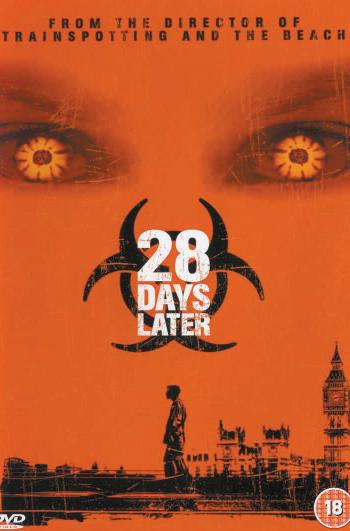
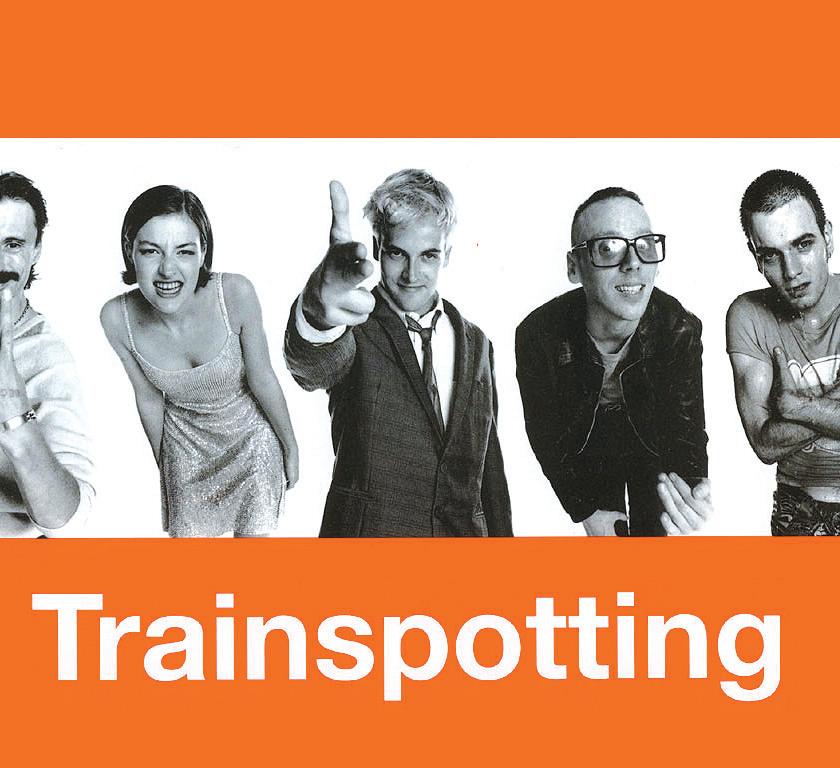
January 7 2009, The Record Page 20
Fun in the slums: Jamal, played here as a boy by Ayush Mahesh Khedekar, in an hilarious moment from Slumdog Millionaire, a scene which portrays his dogged spirit and unfailing hope in good things, despite living in India’s slums.
The object of affection: Latika, played sympathetically and admirably by Indian model Freida Pinto, provides the drive for Jamal throughout the movie. MOVIE STILLS COURTESY OF LUNA CINEMAS









 ■ By John Thavis
■ By John Thavis
















































































 ■ By Carol Glatz
■ By Carol Glatz




 ■ By Robert Hiini
■ By Robert Hiini

 ■ By Robert Hiini
■ By Robert Hiini
































